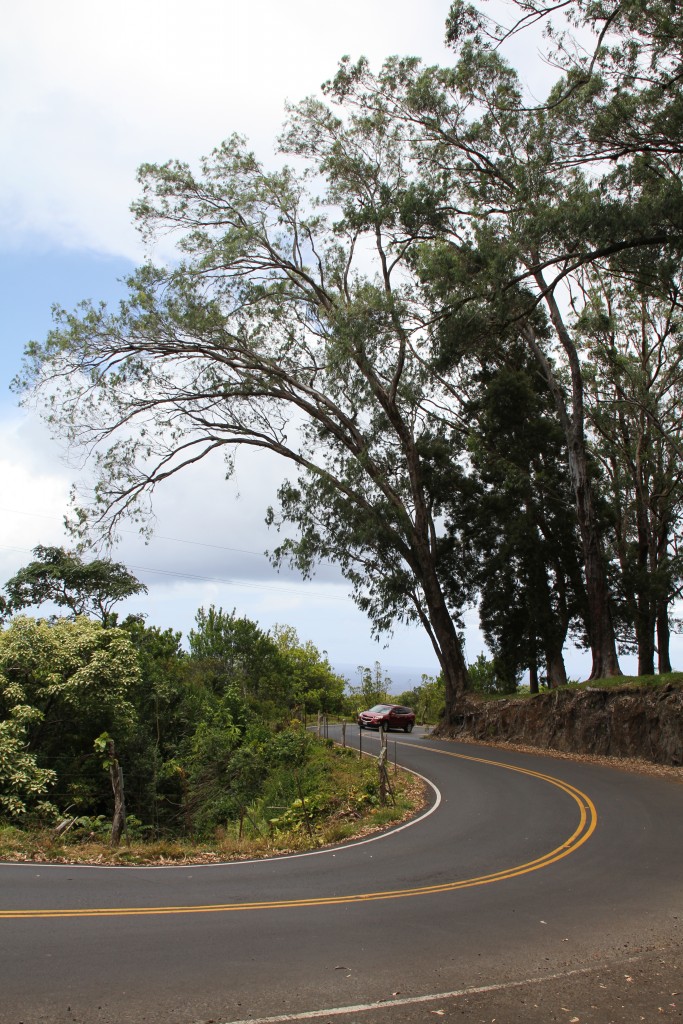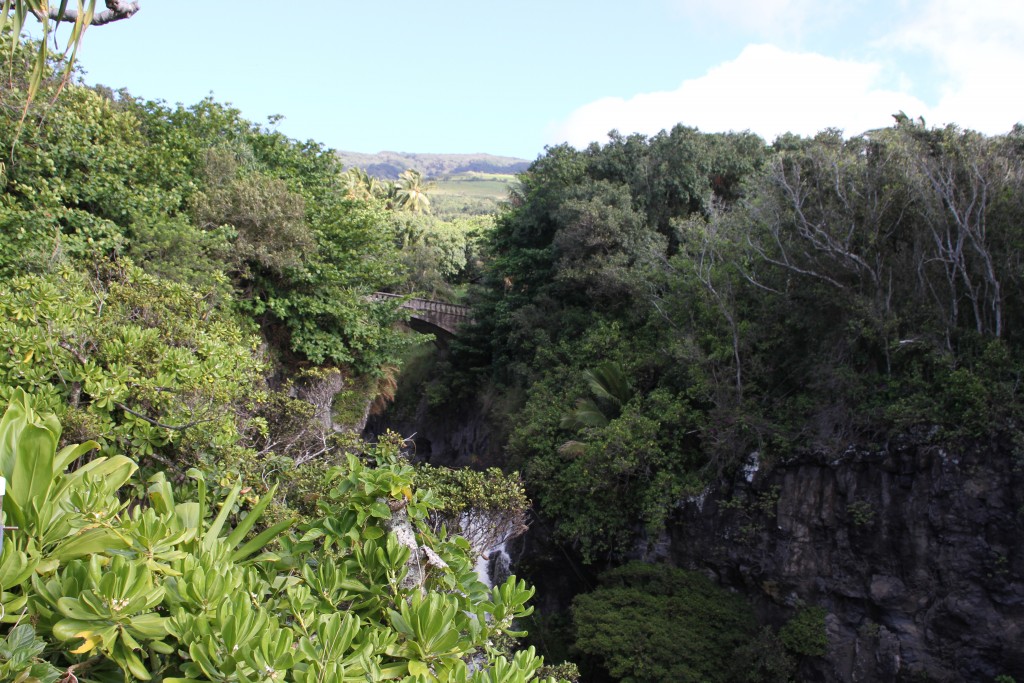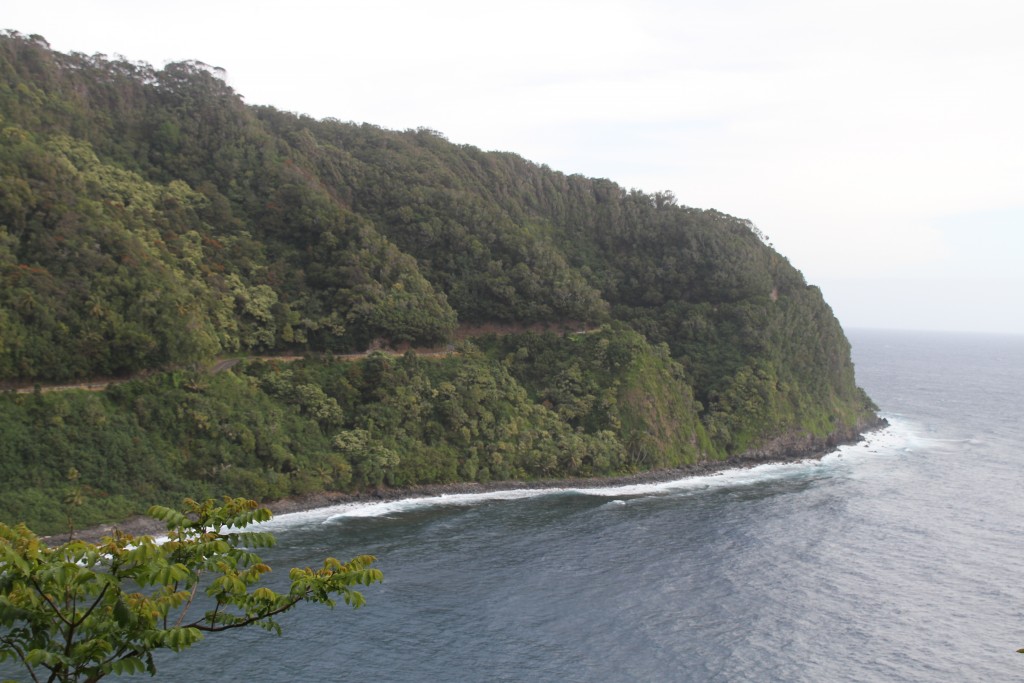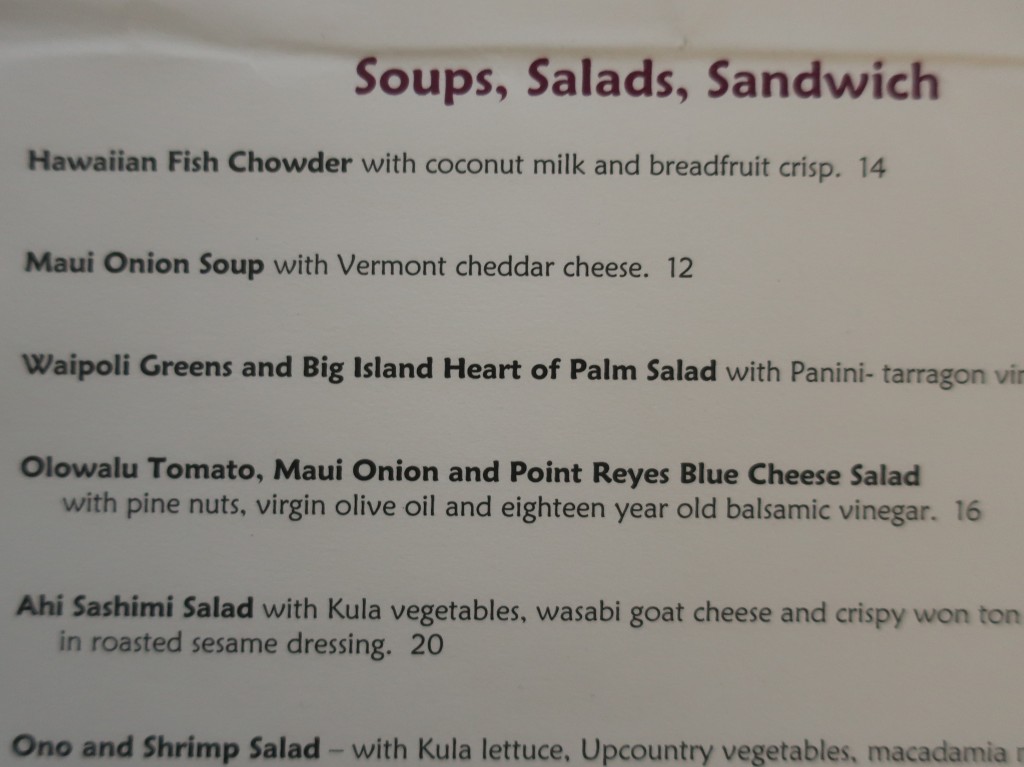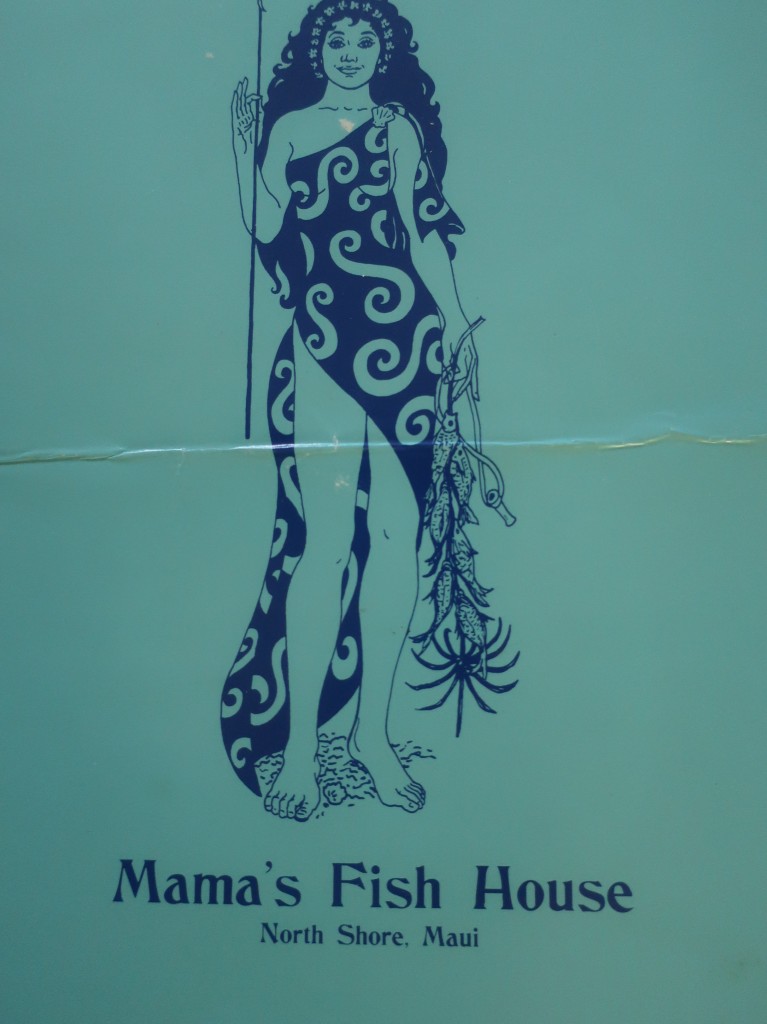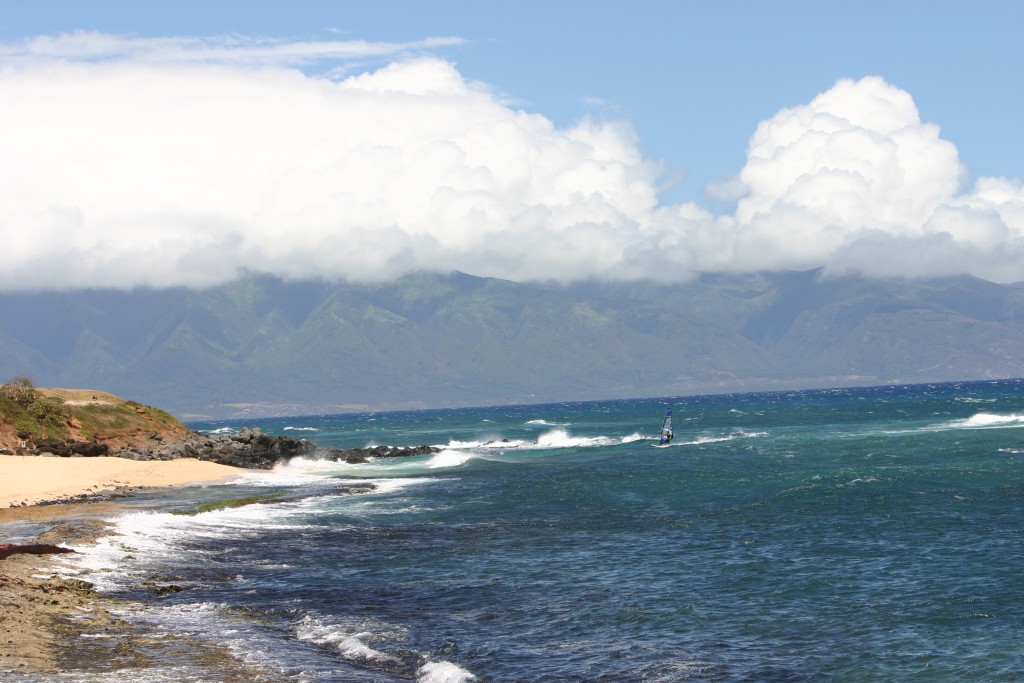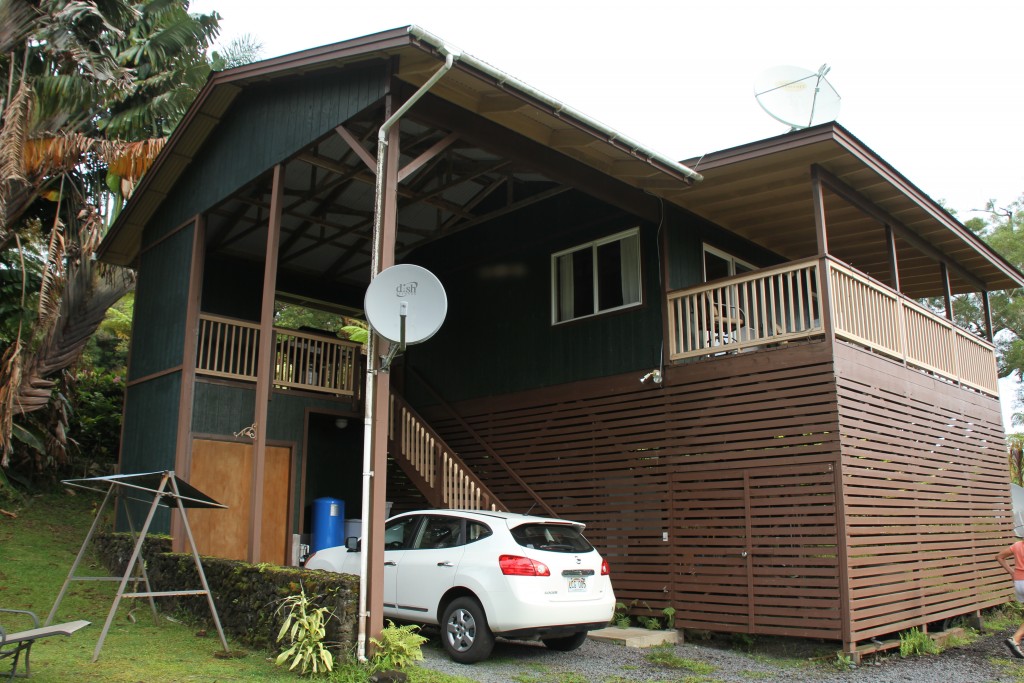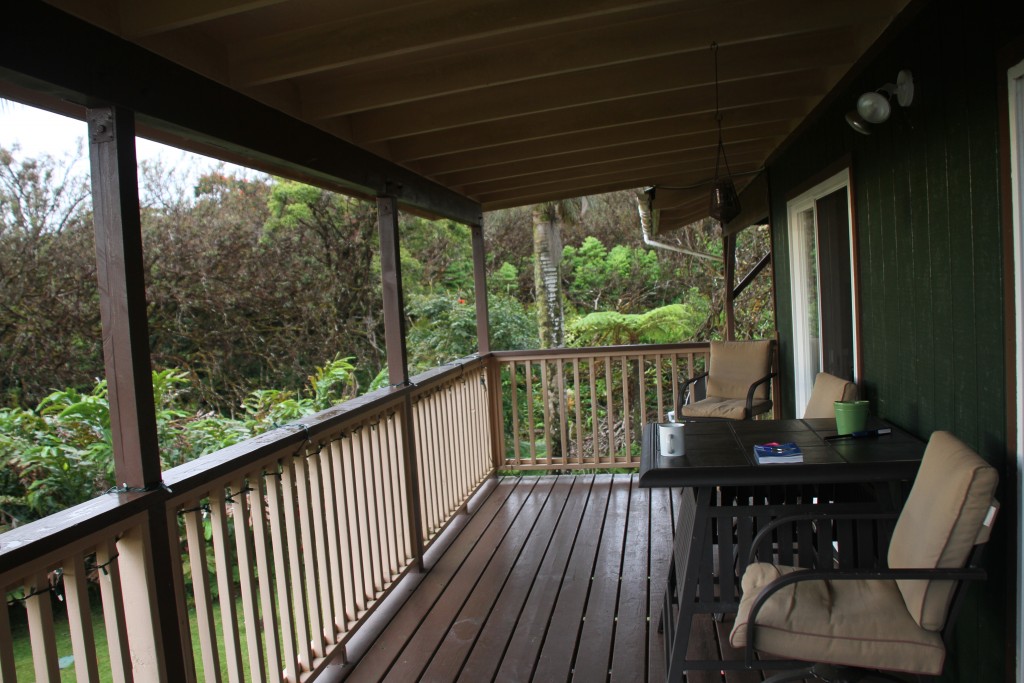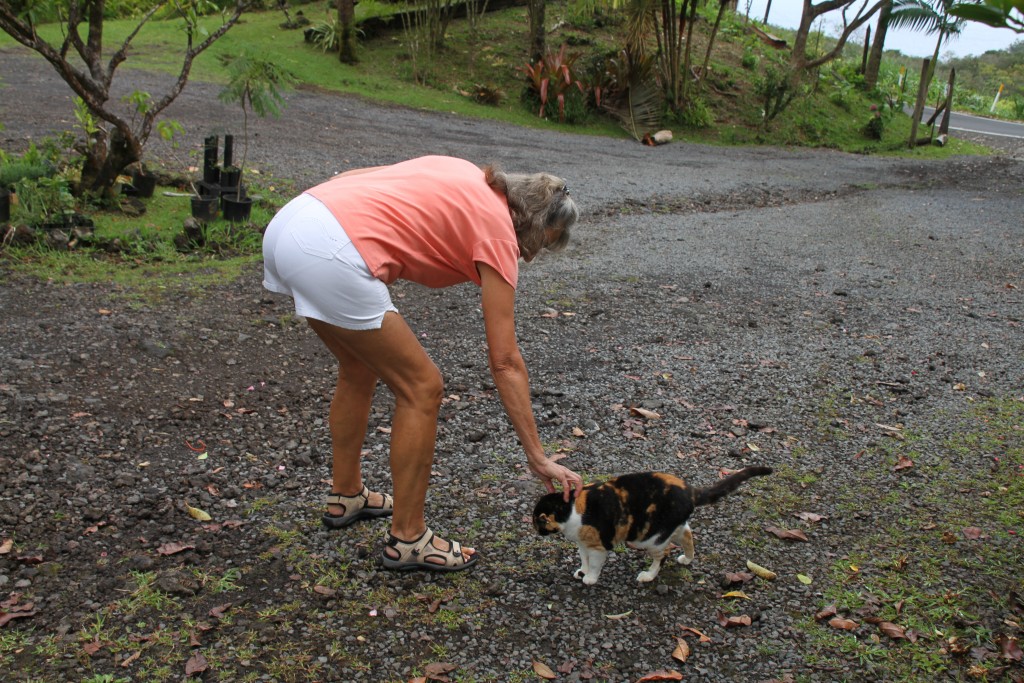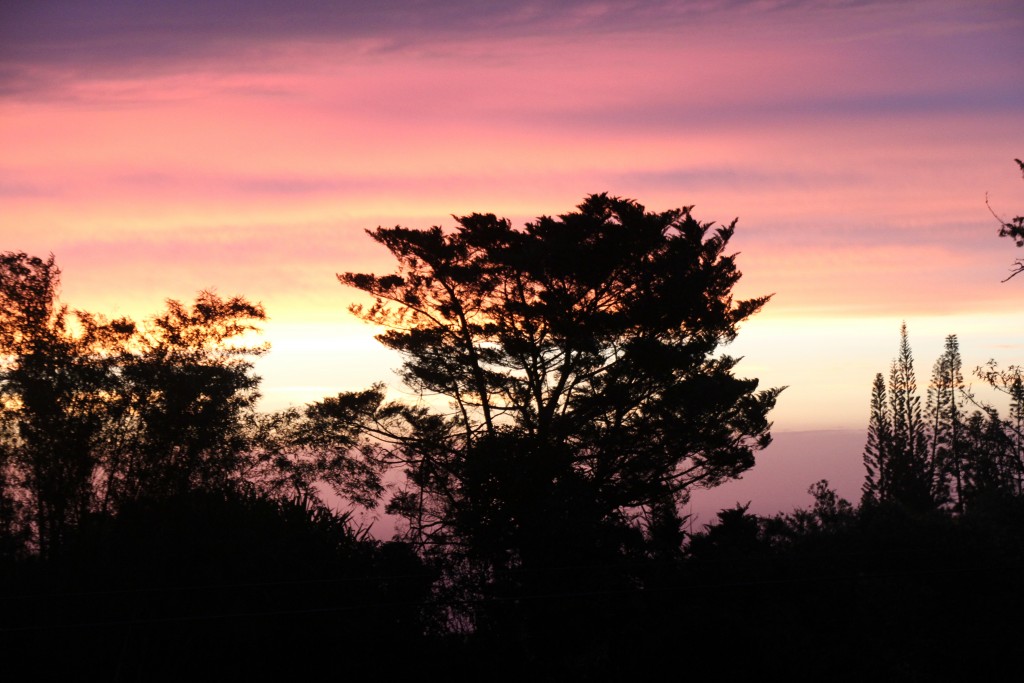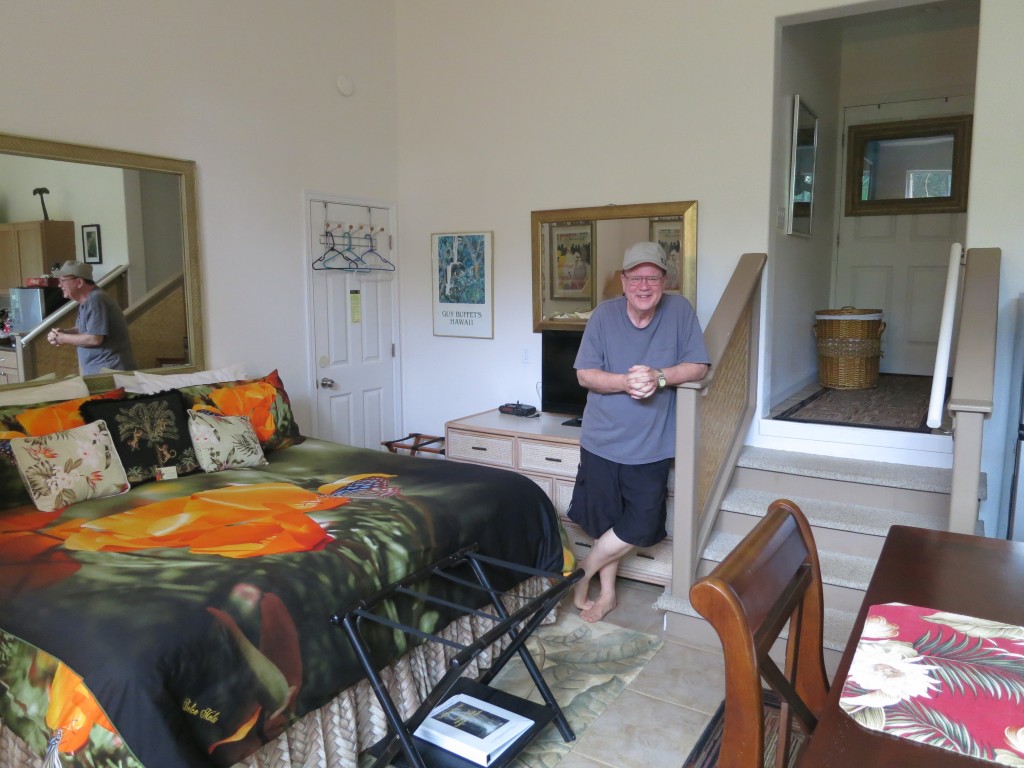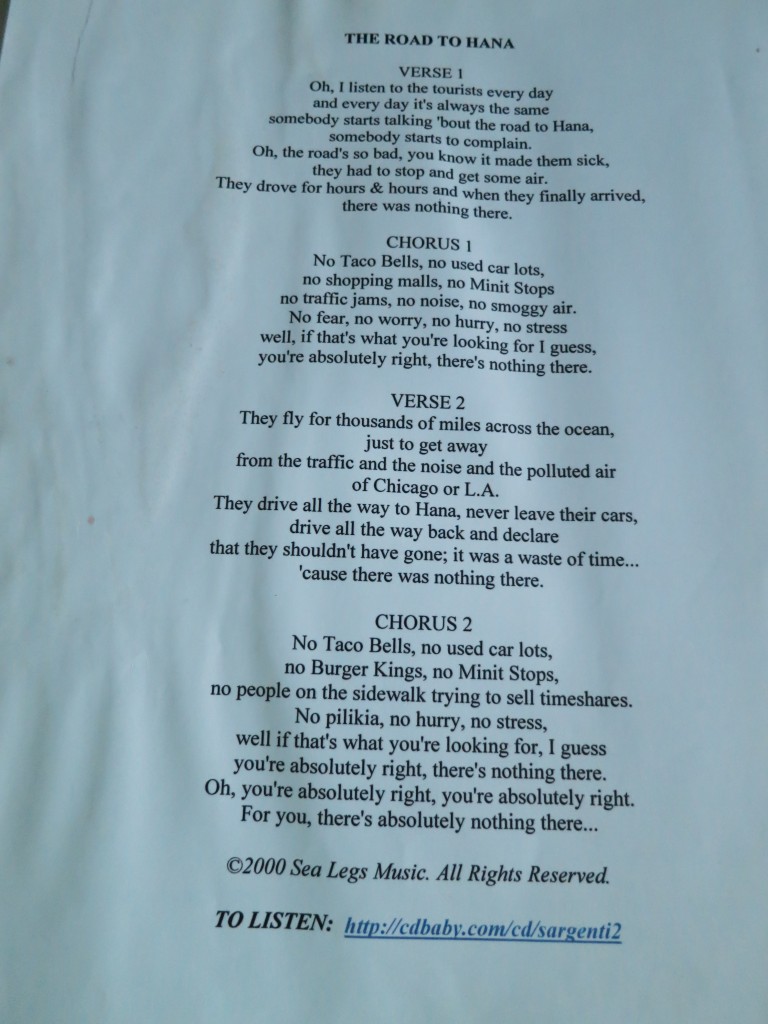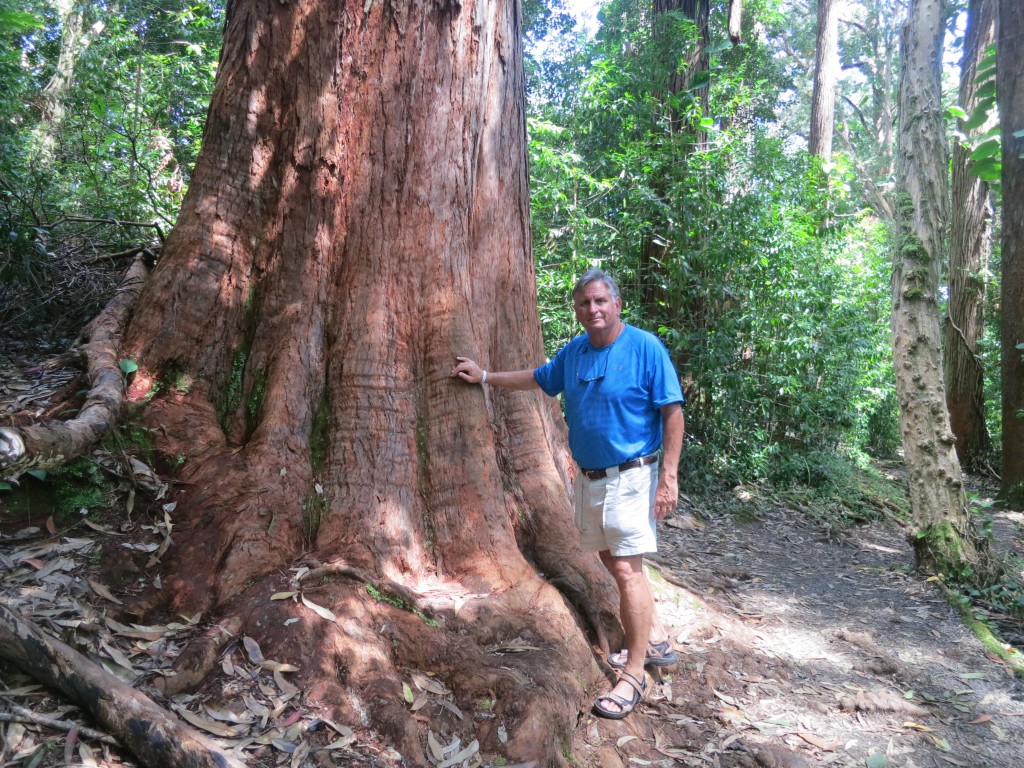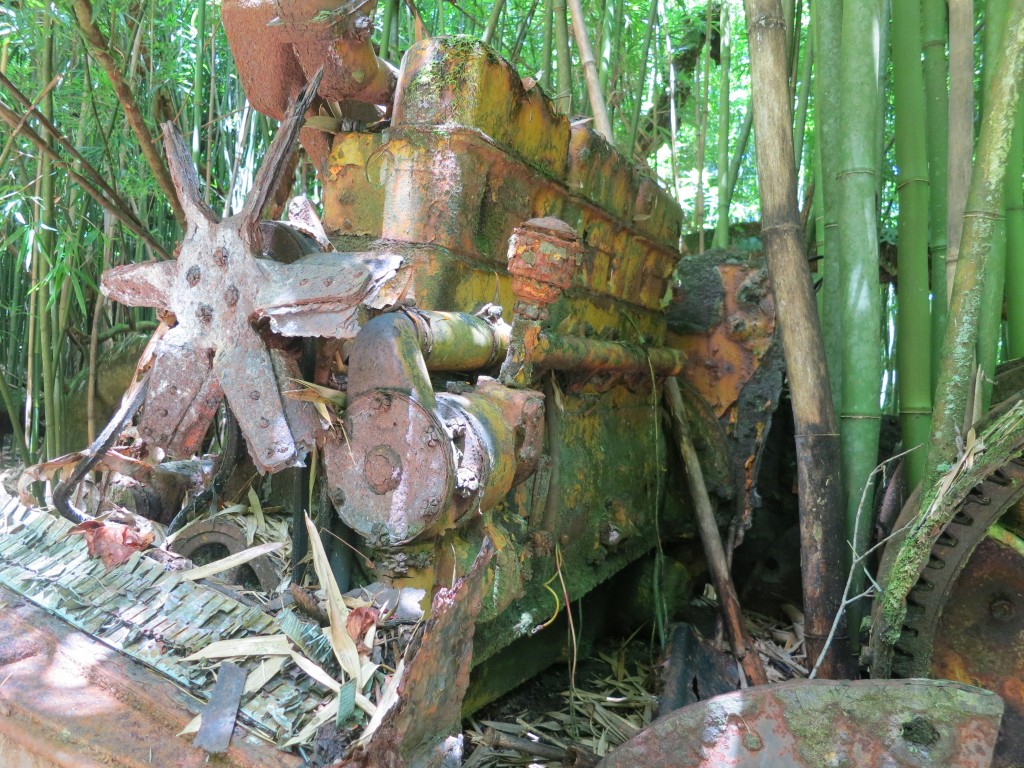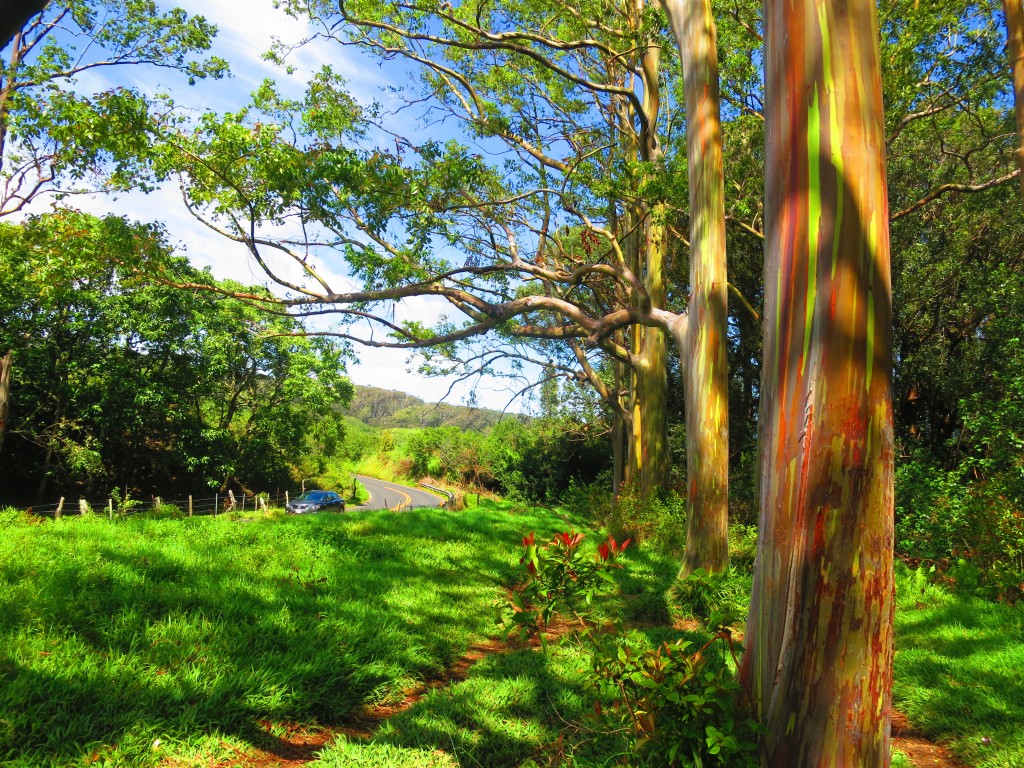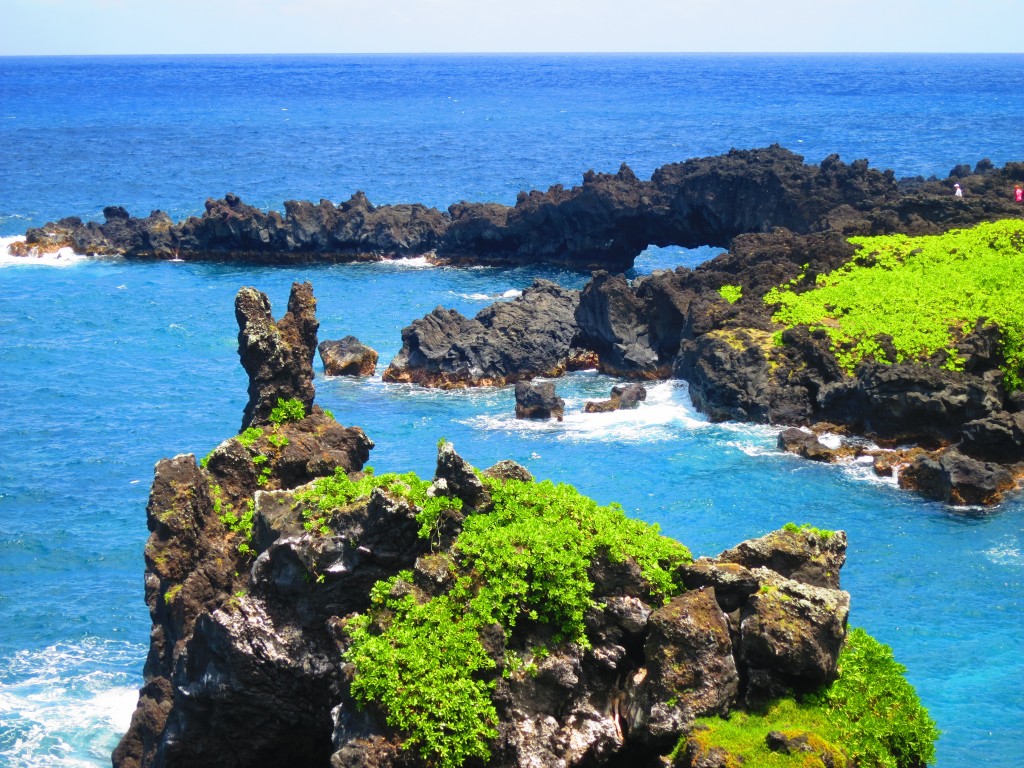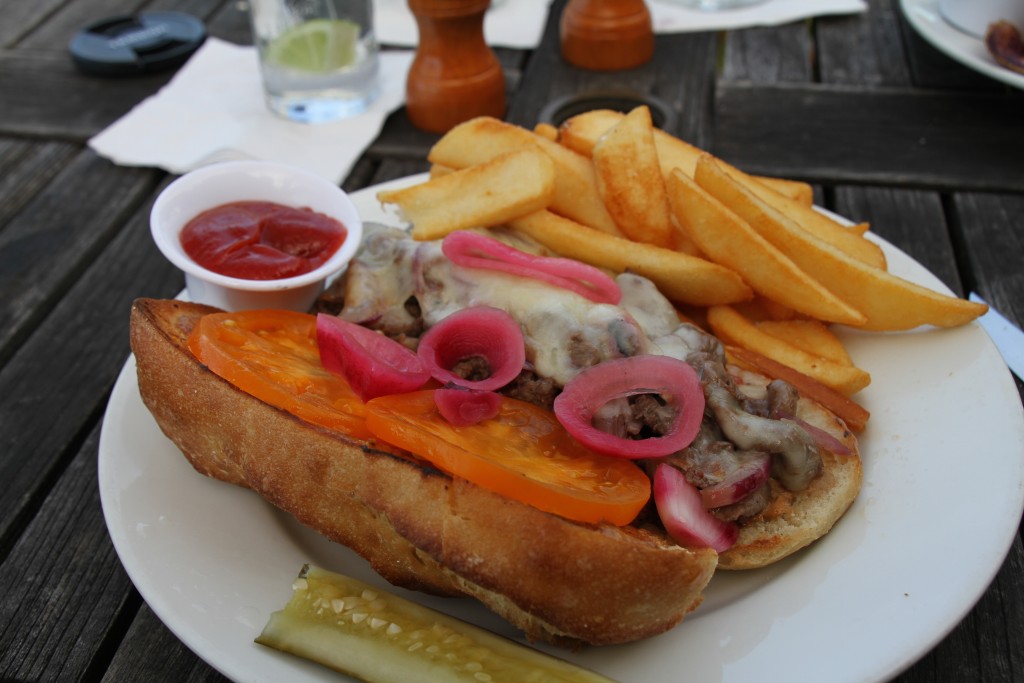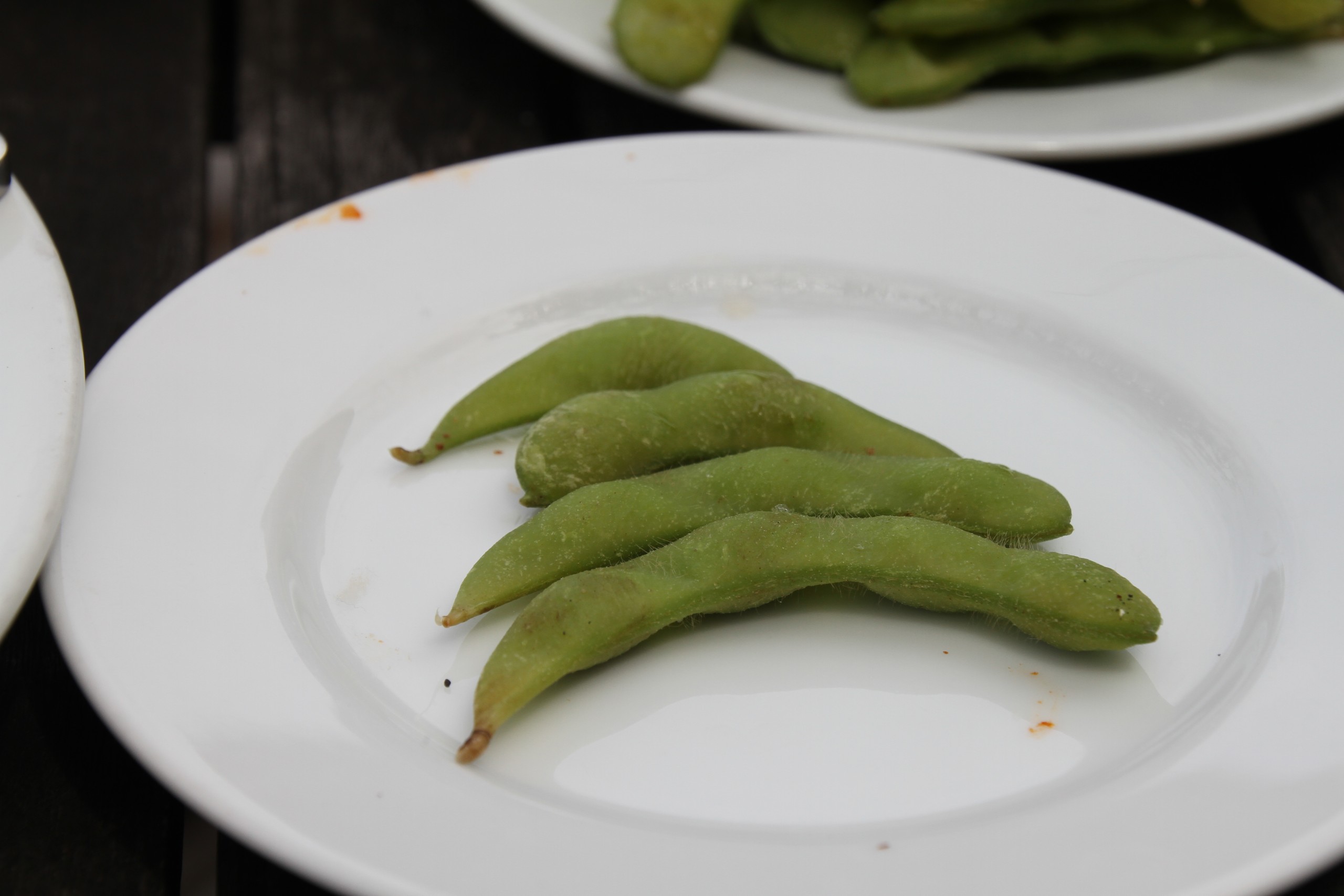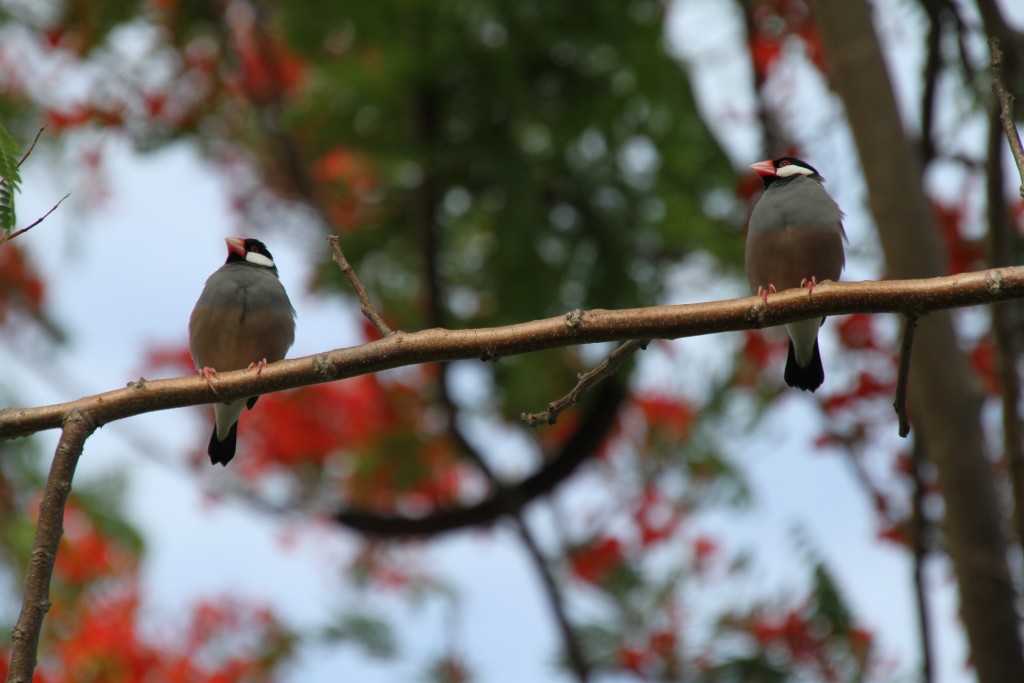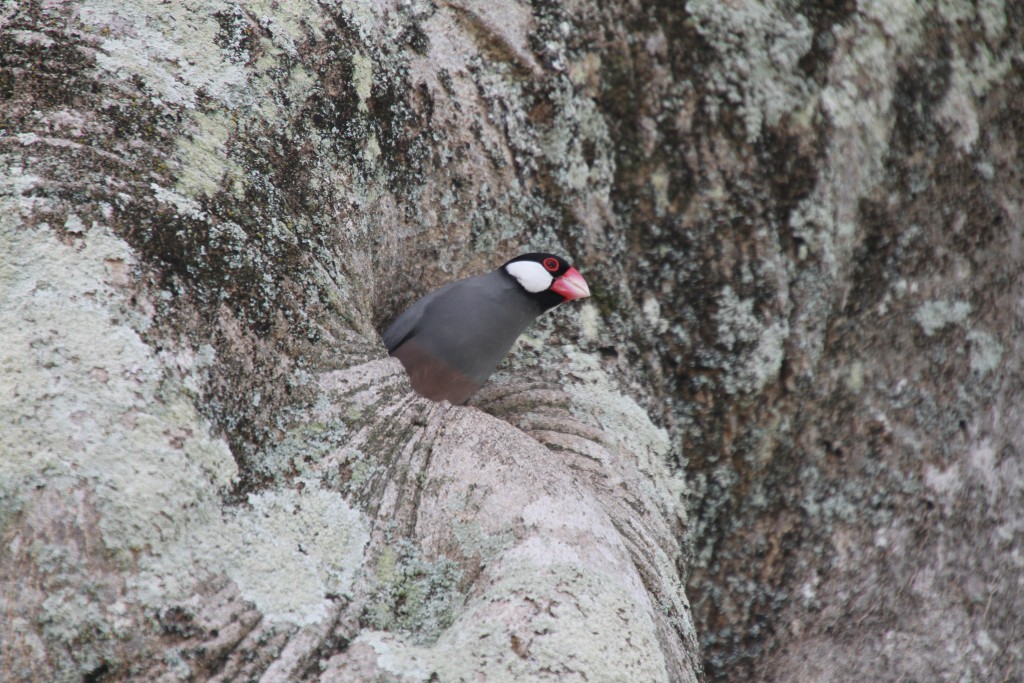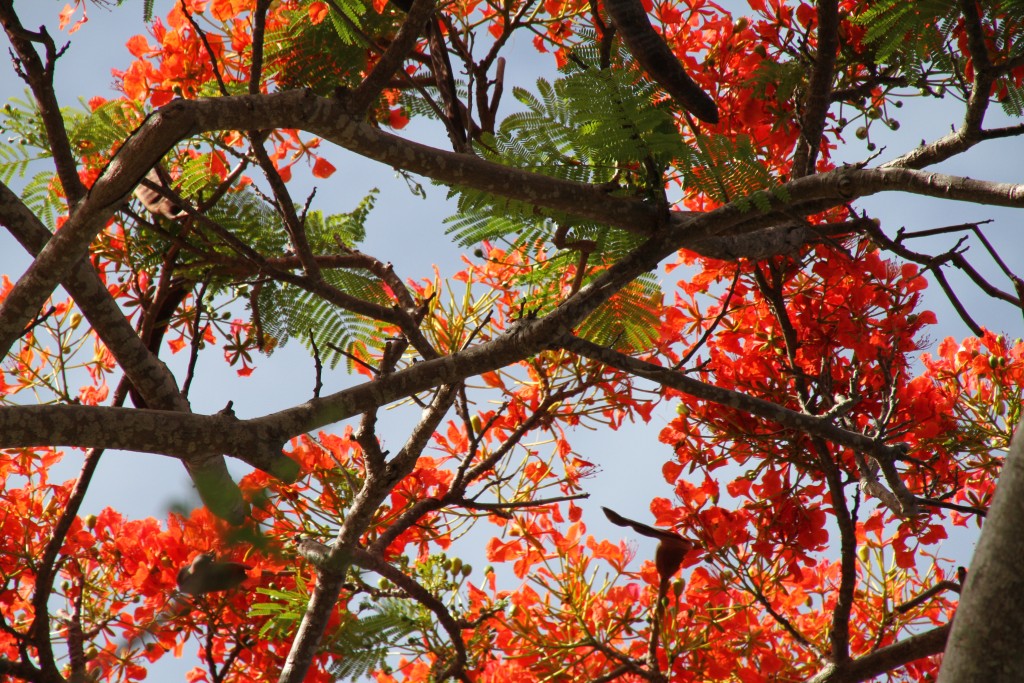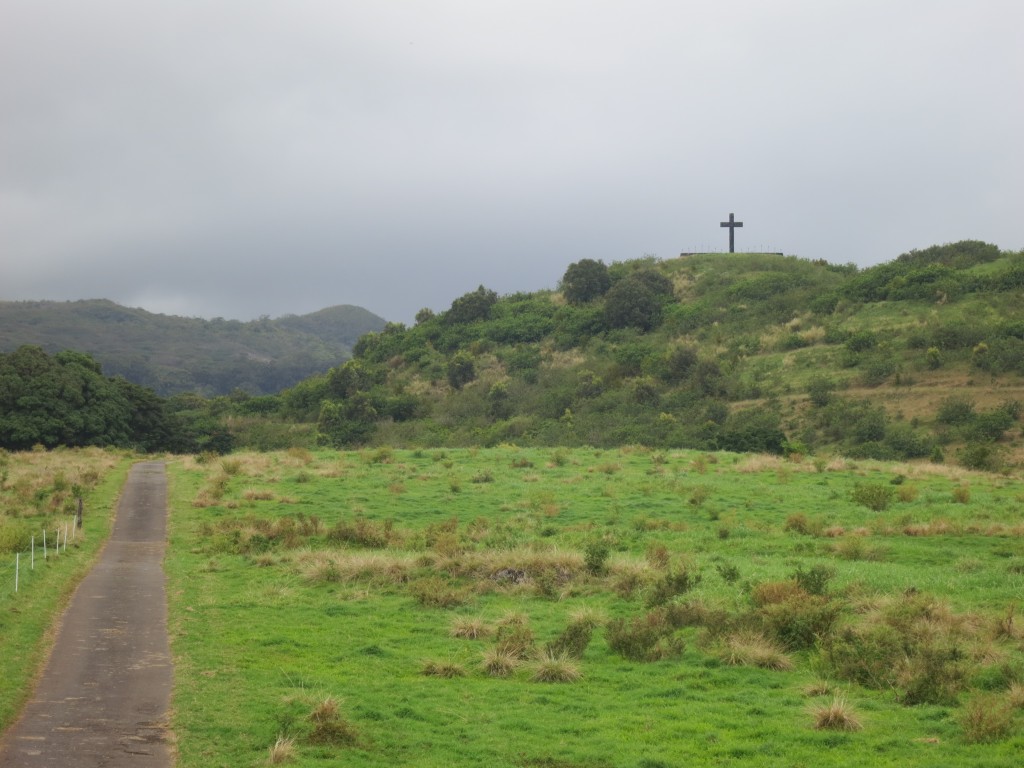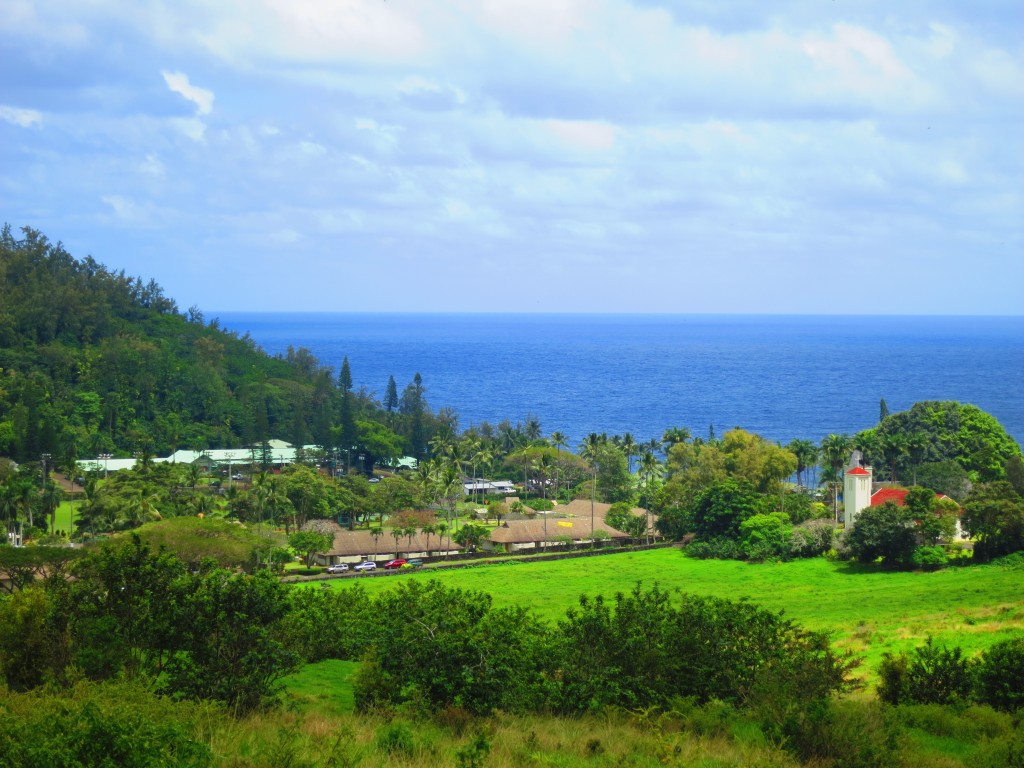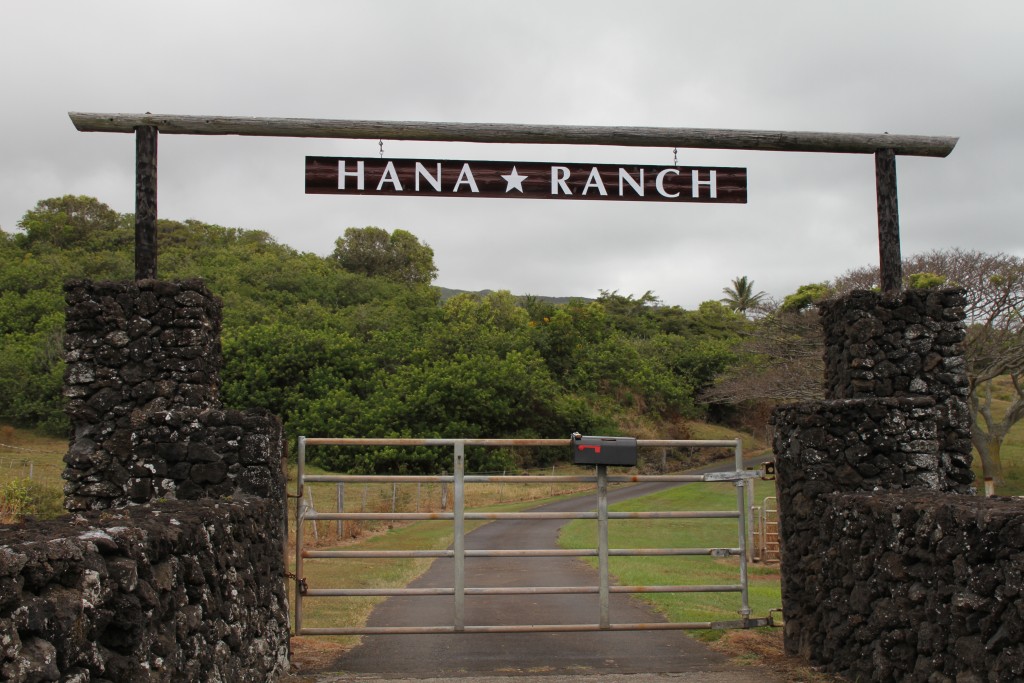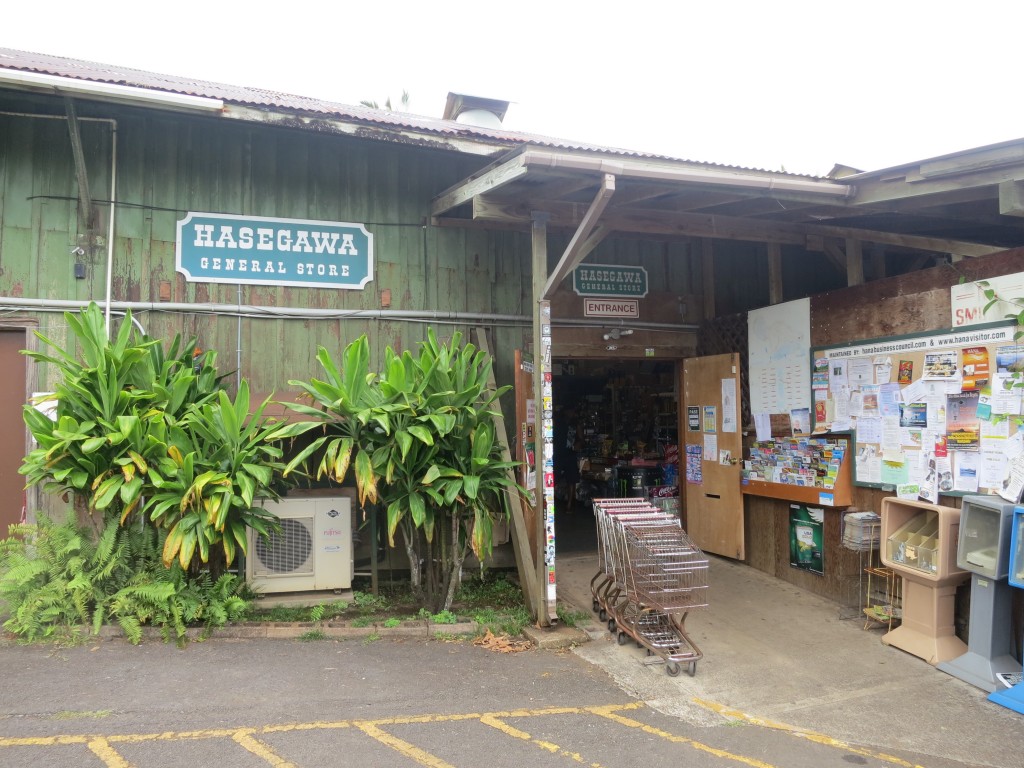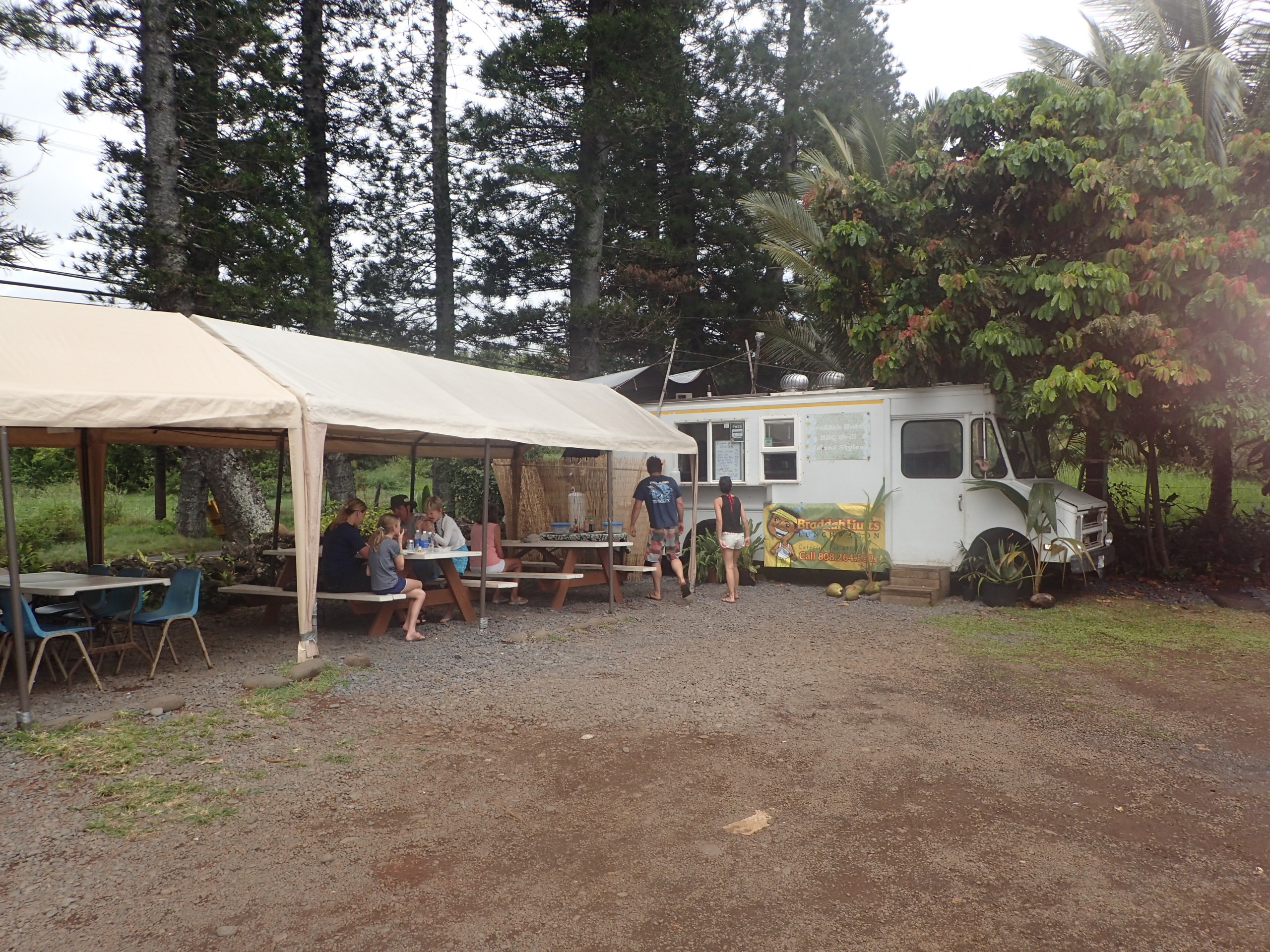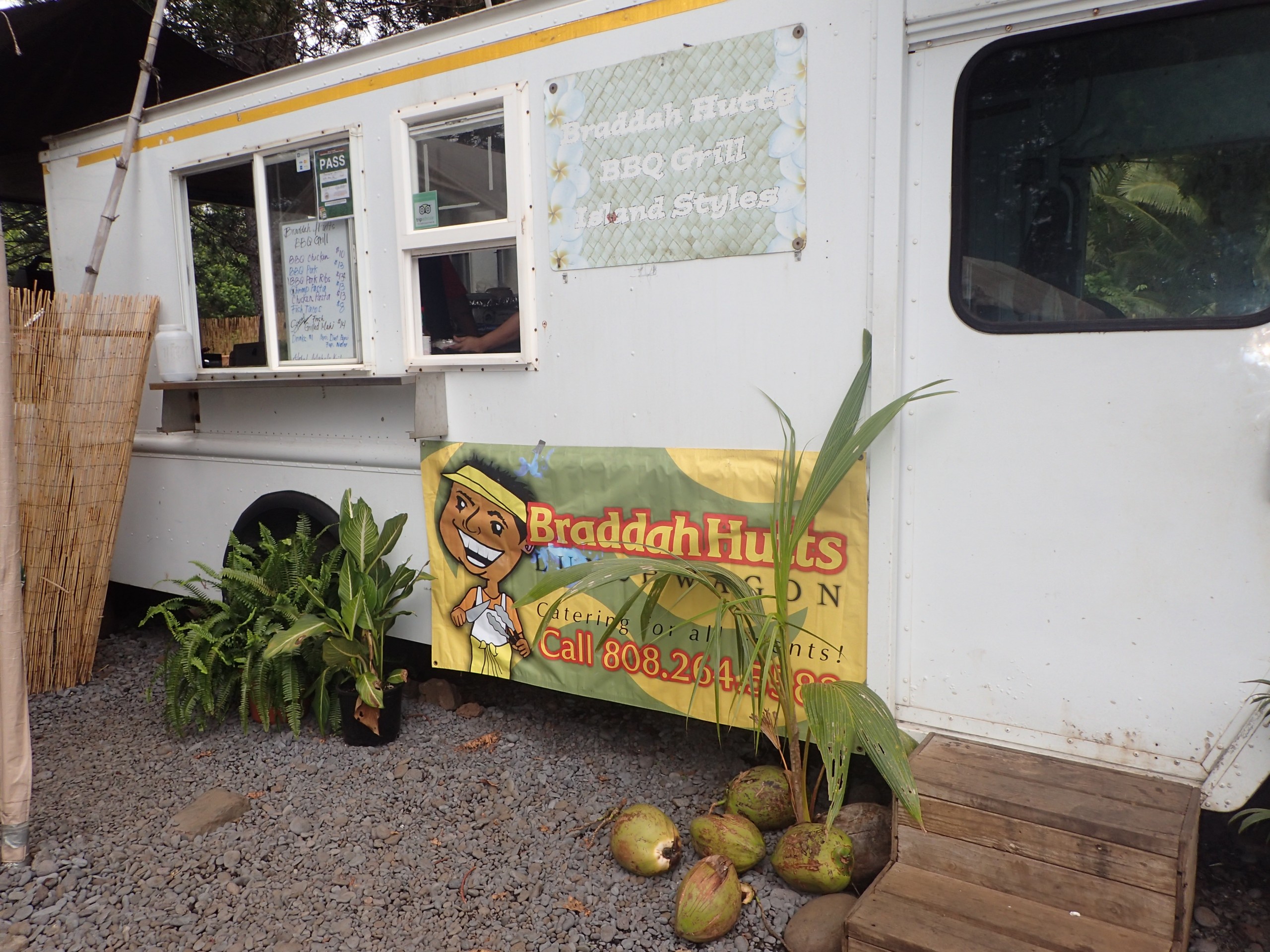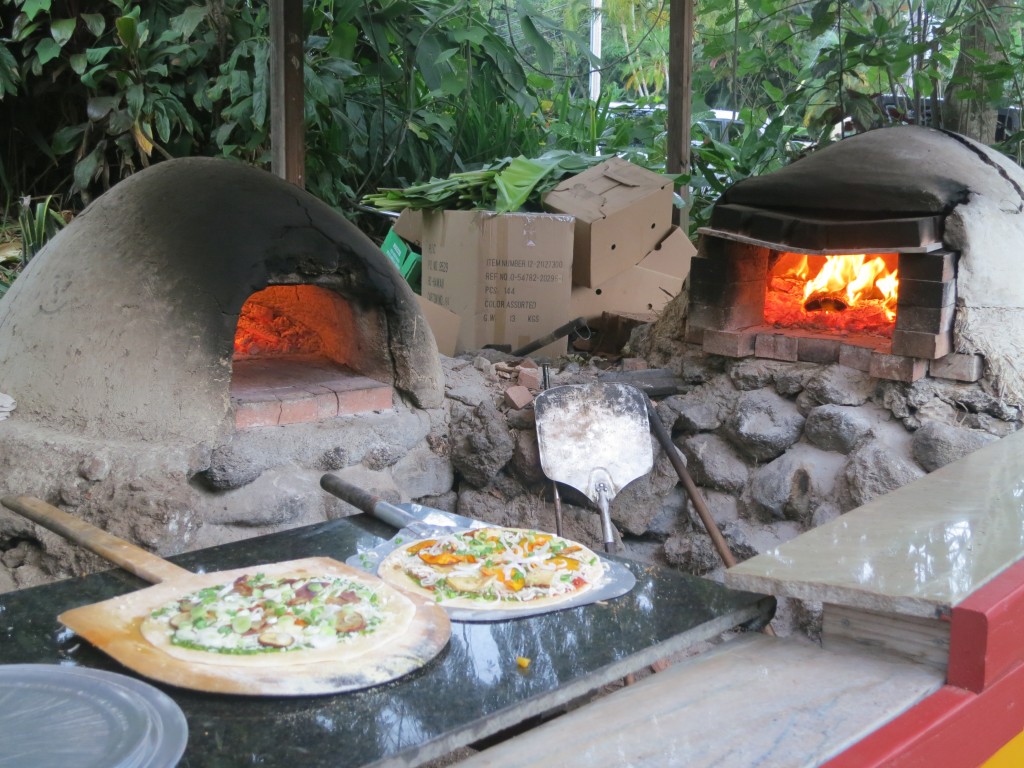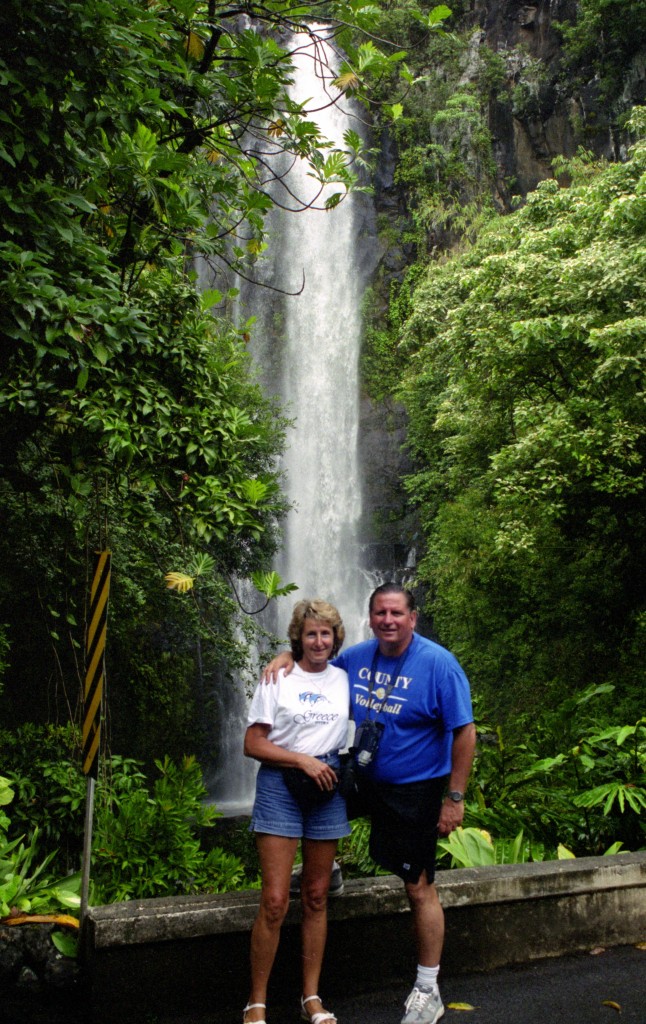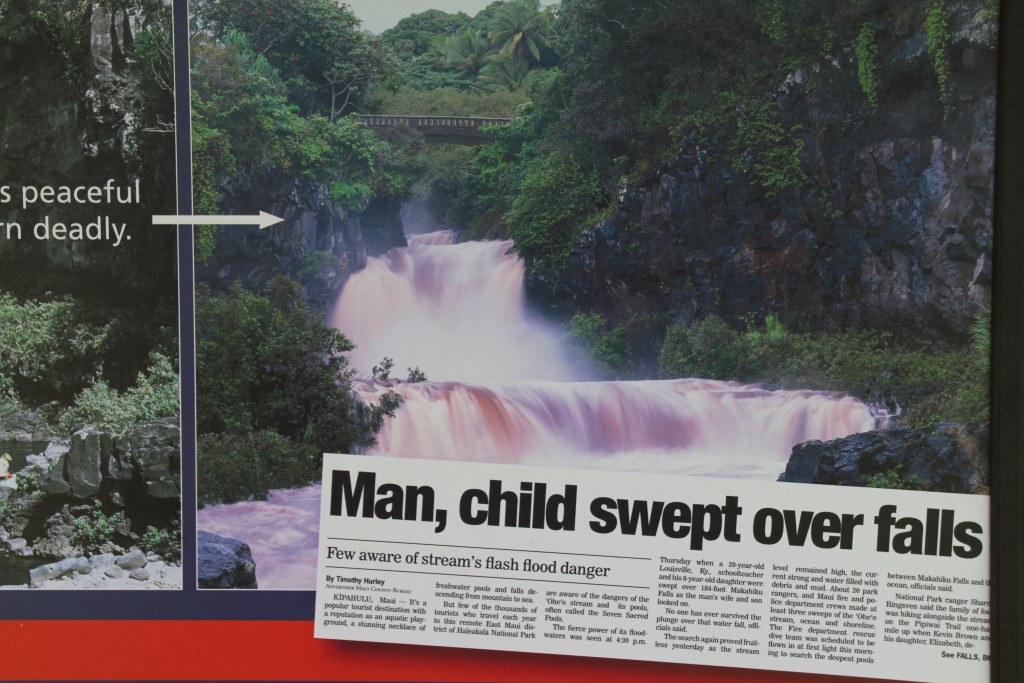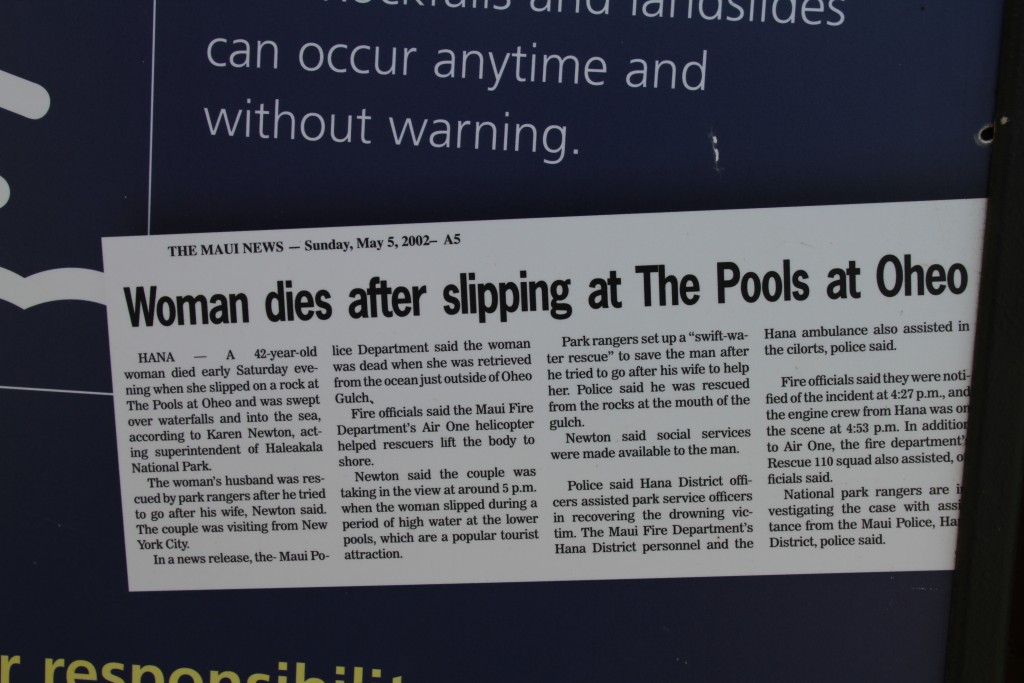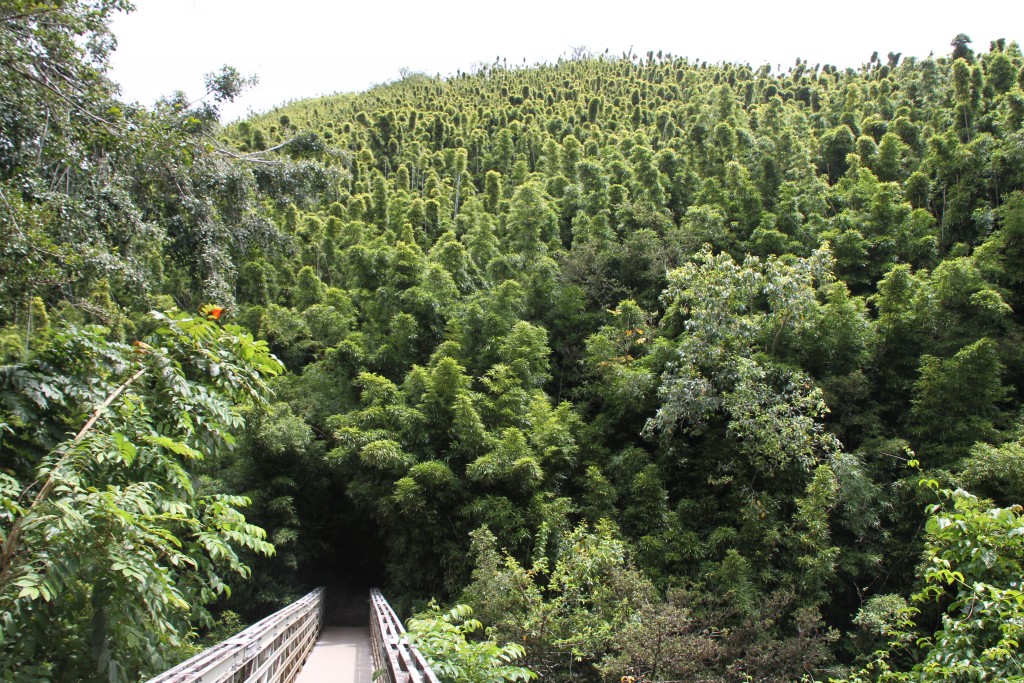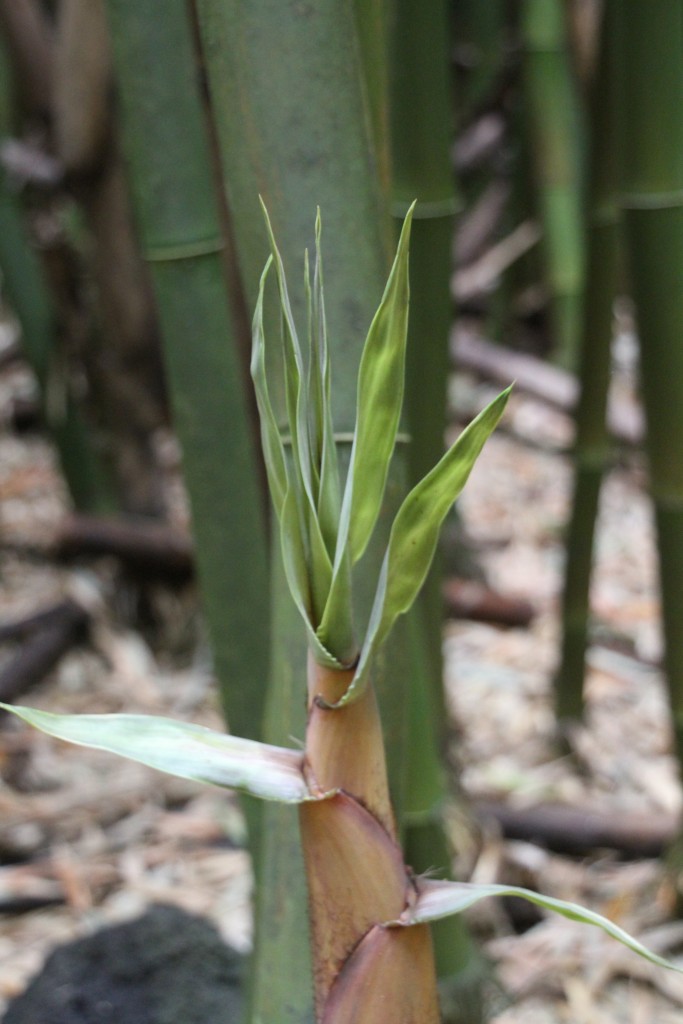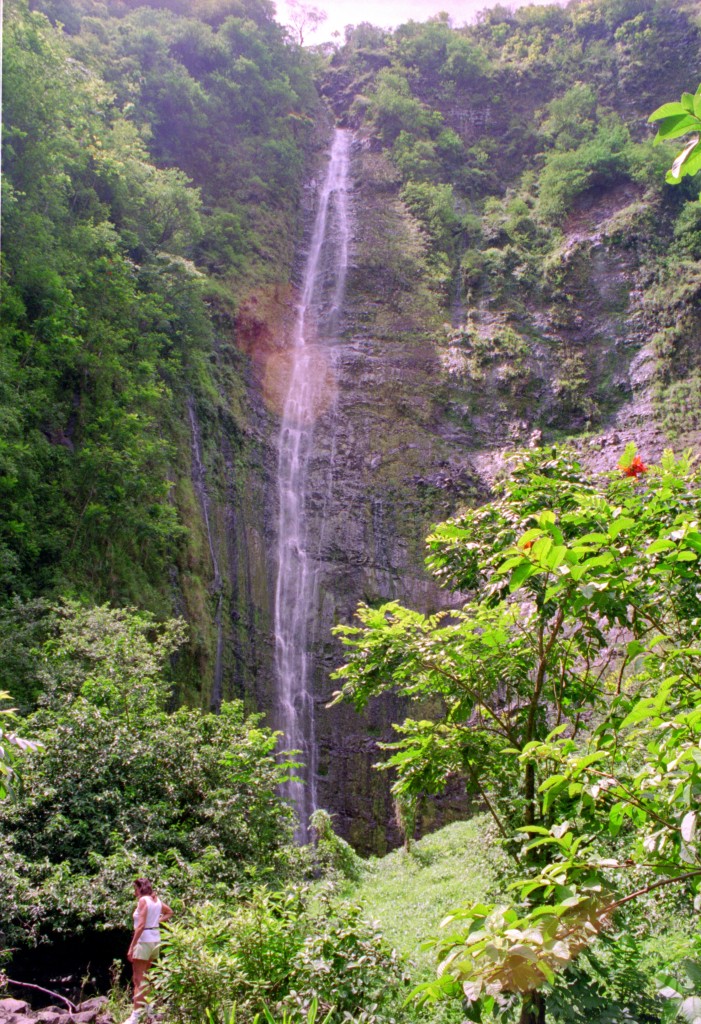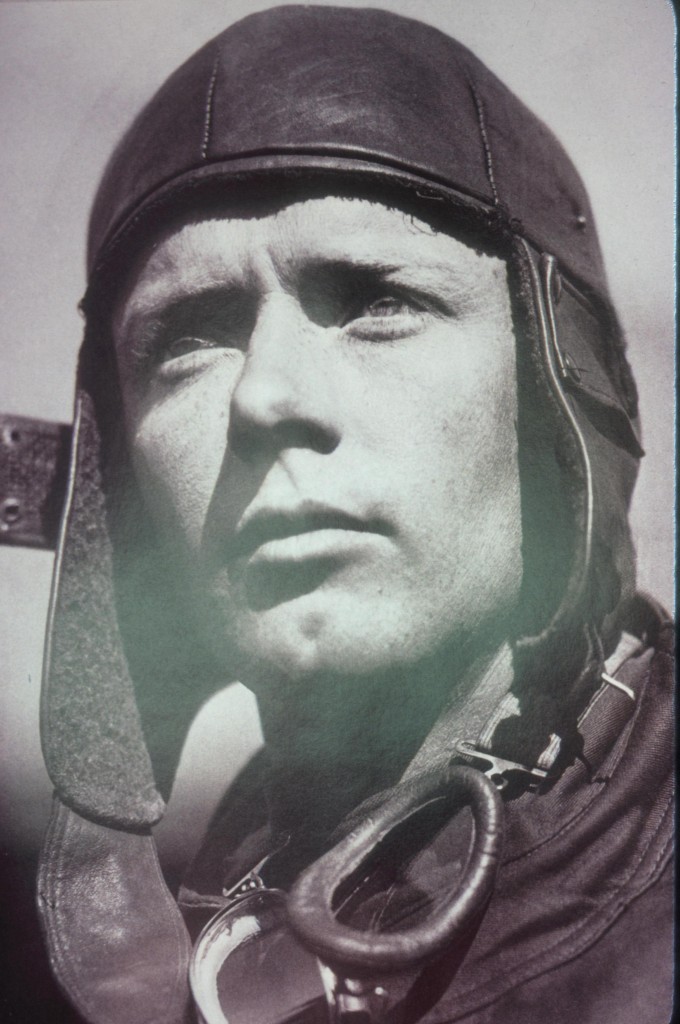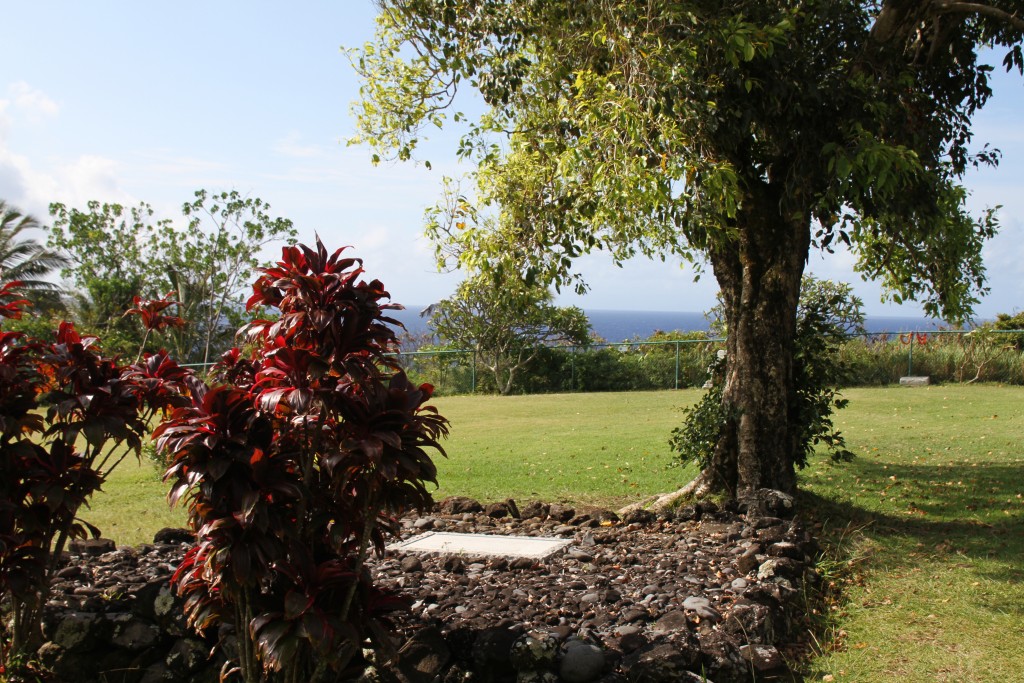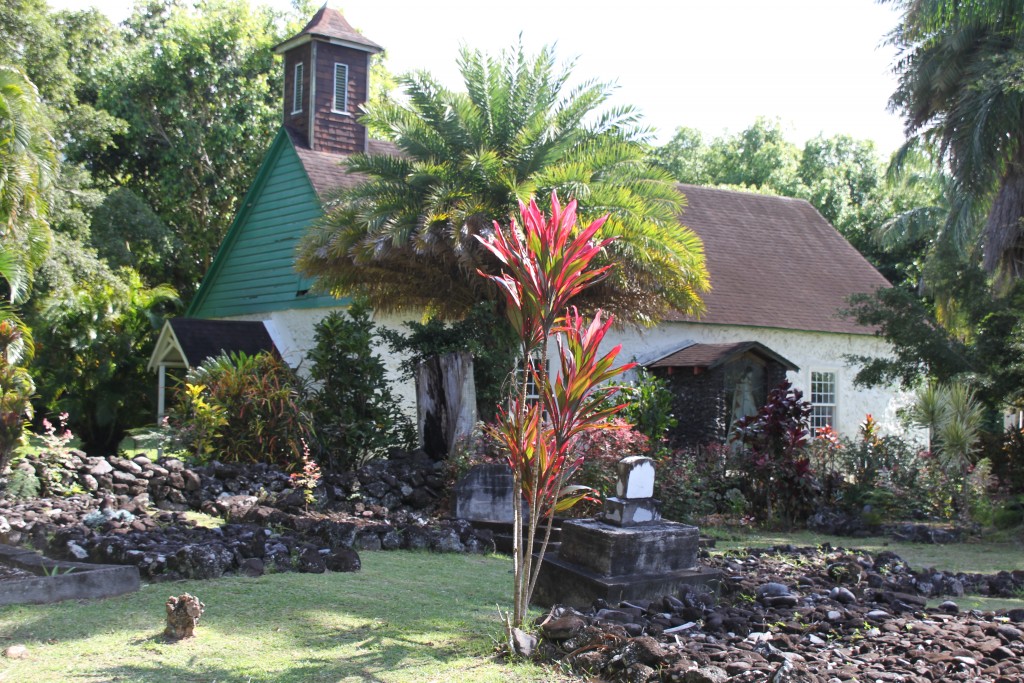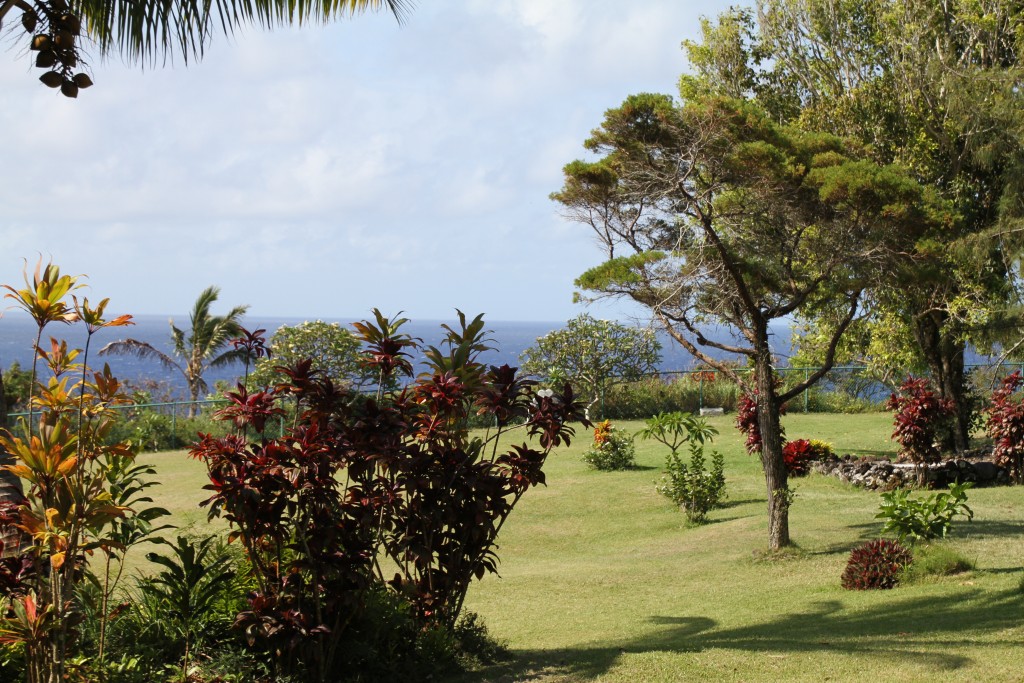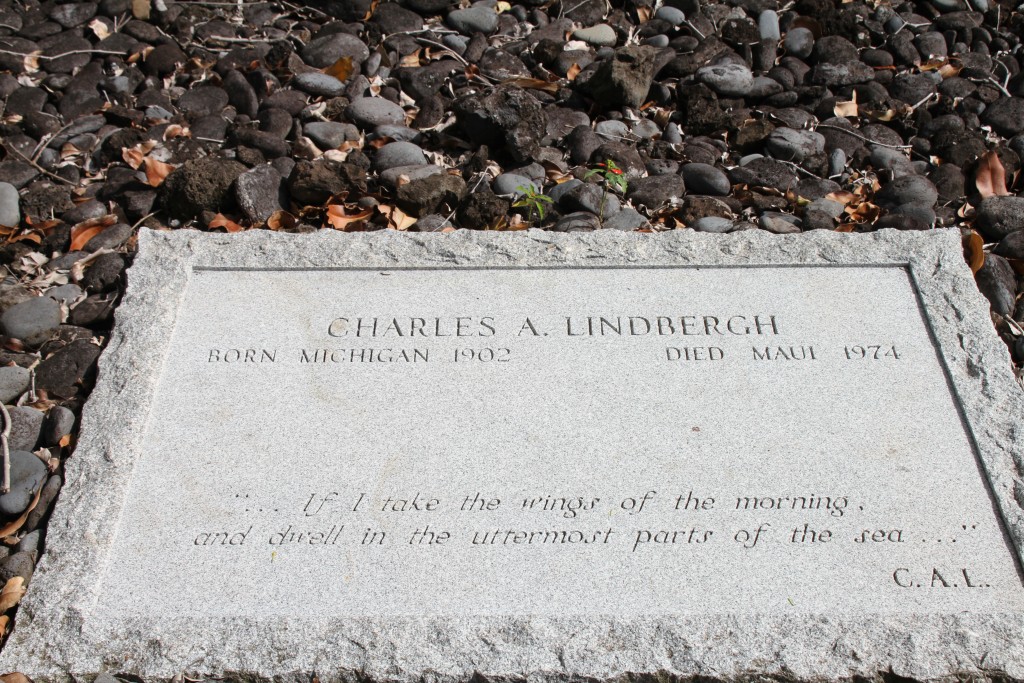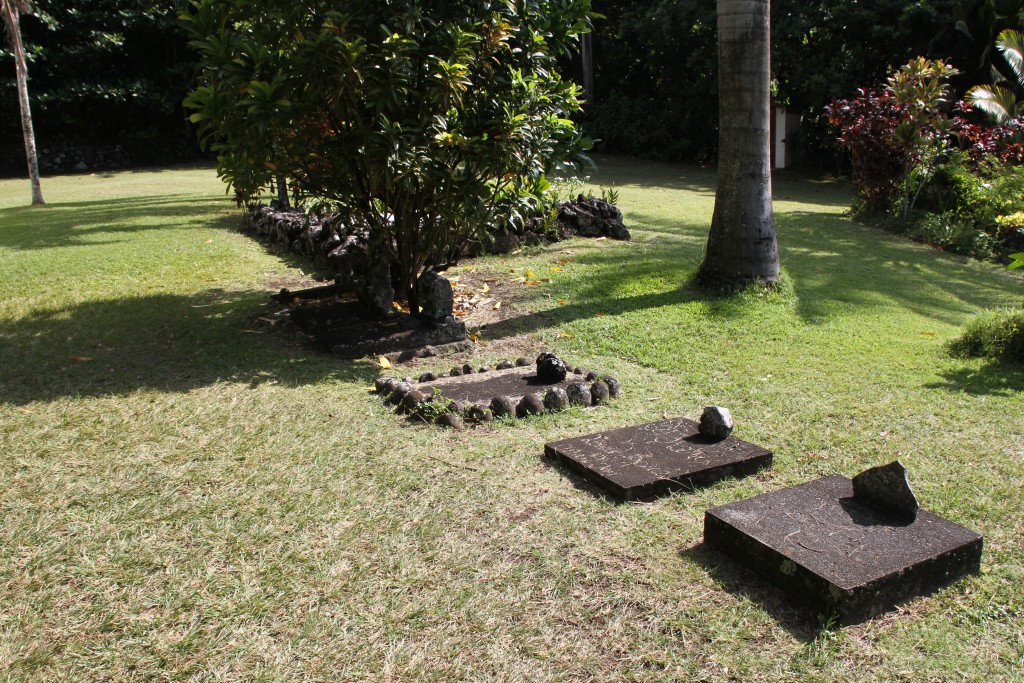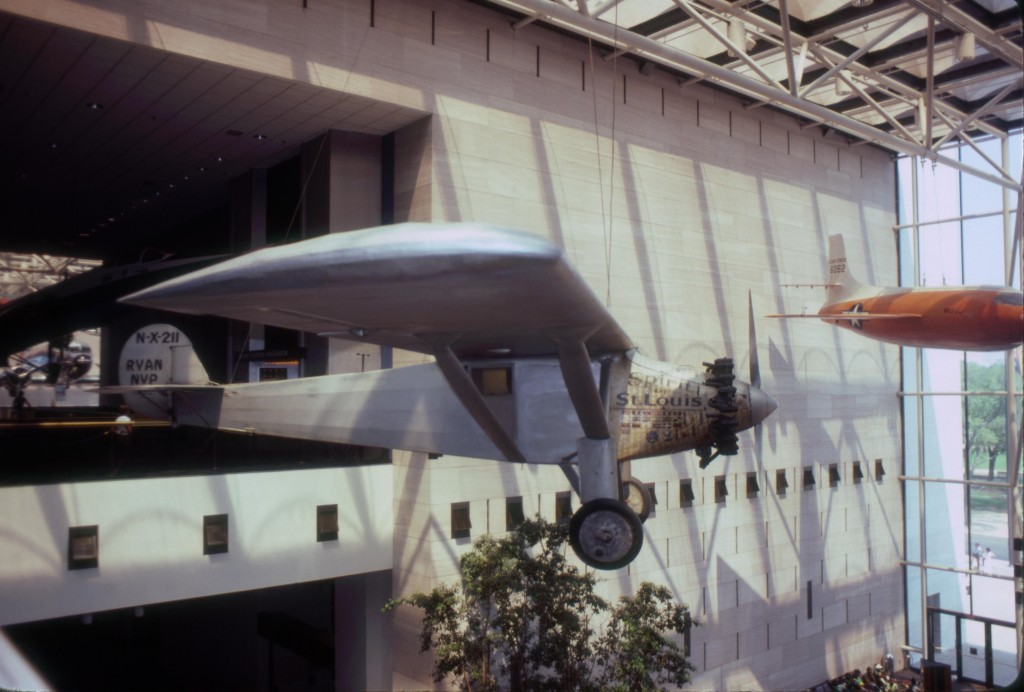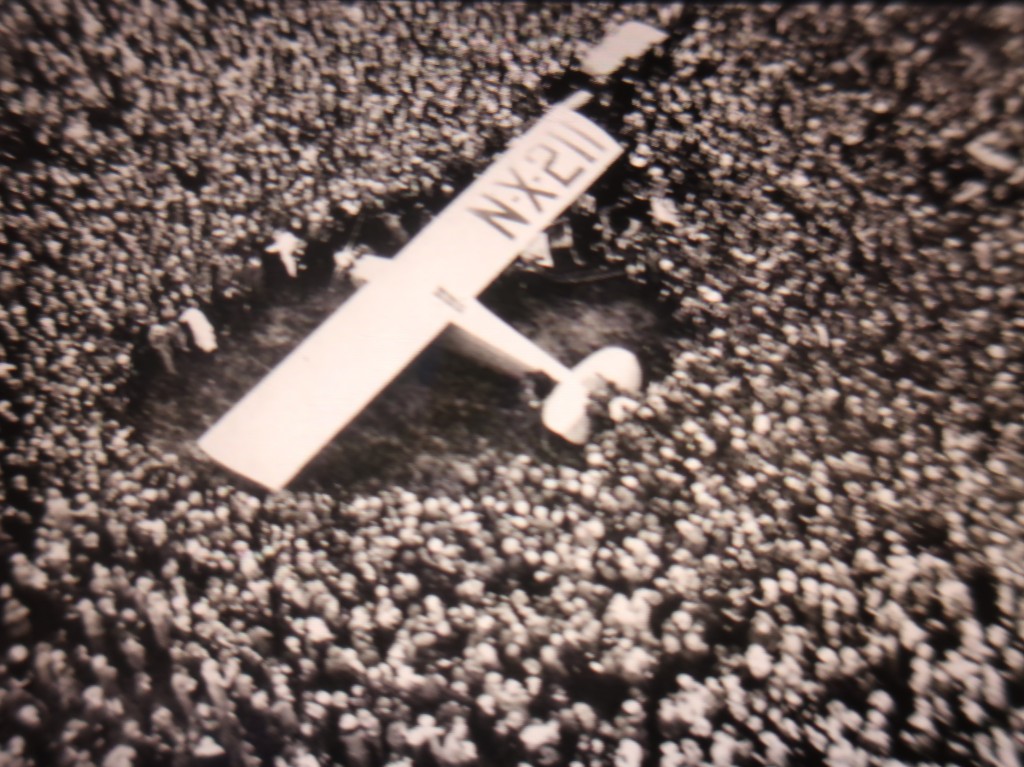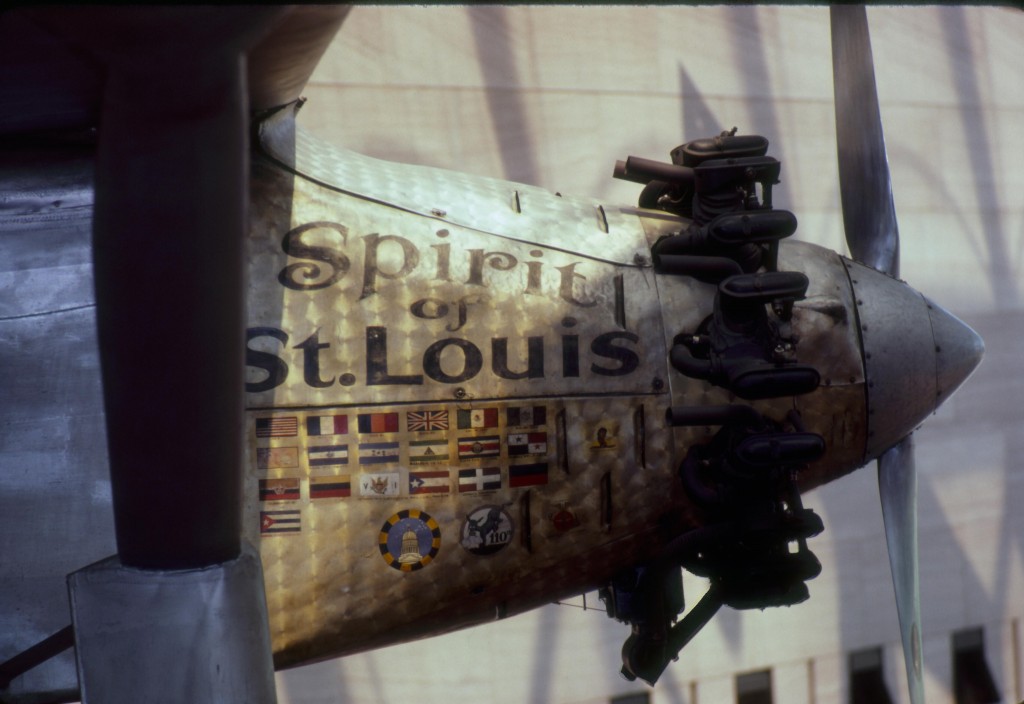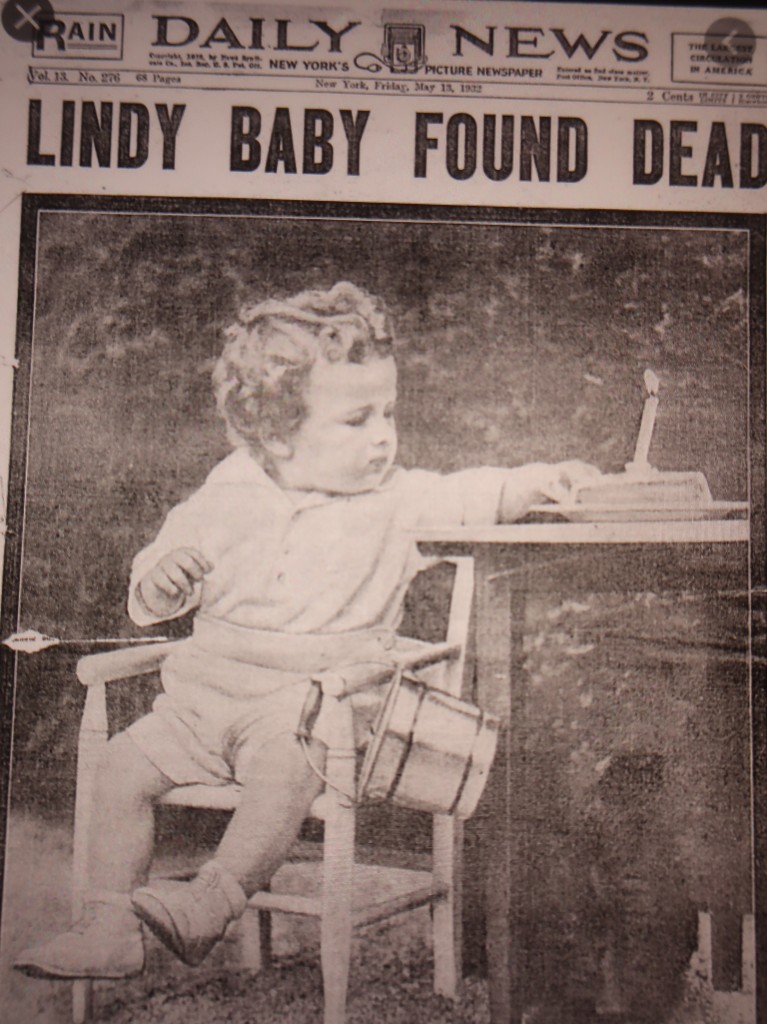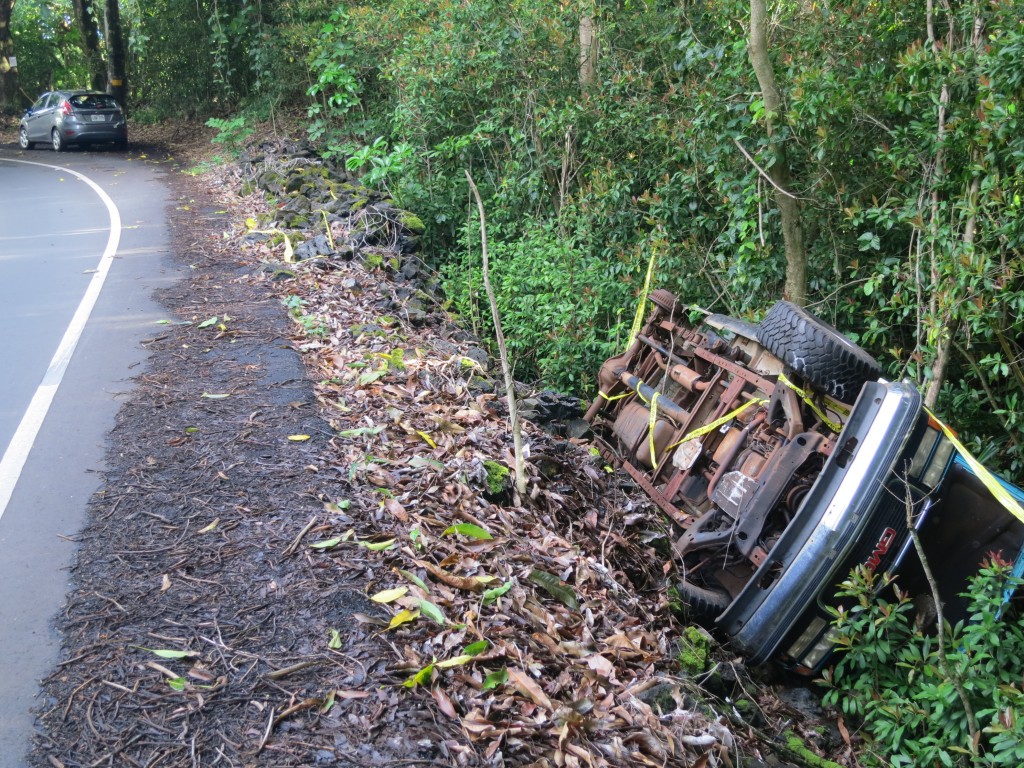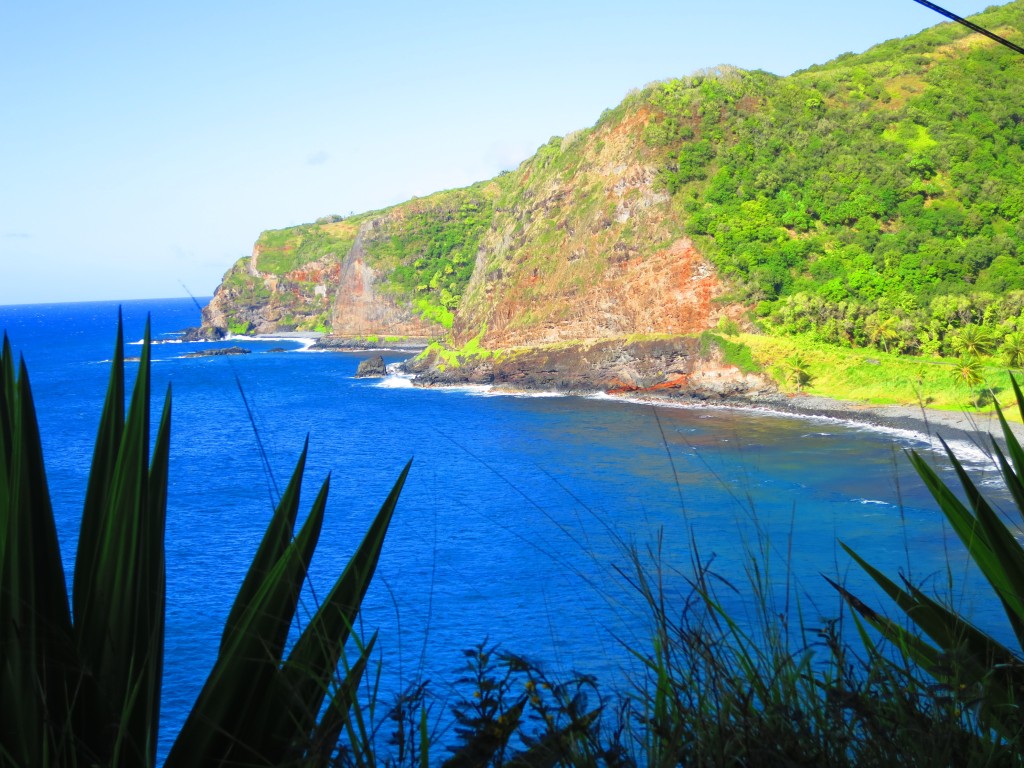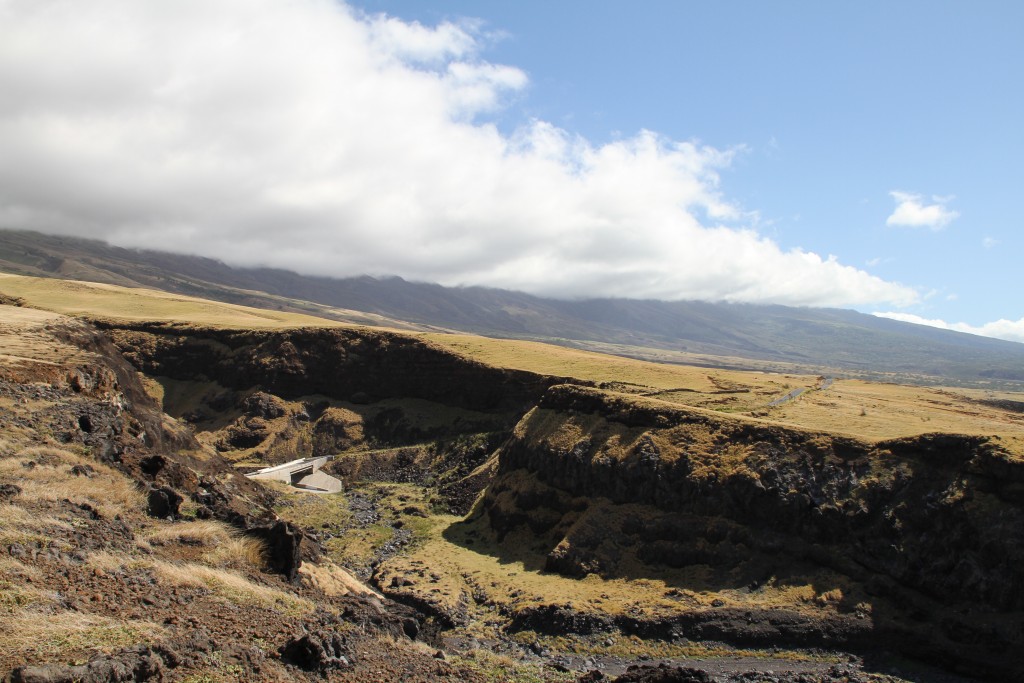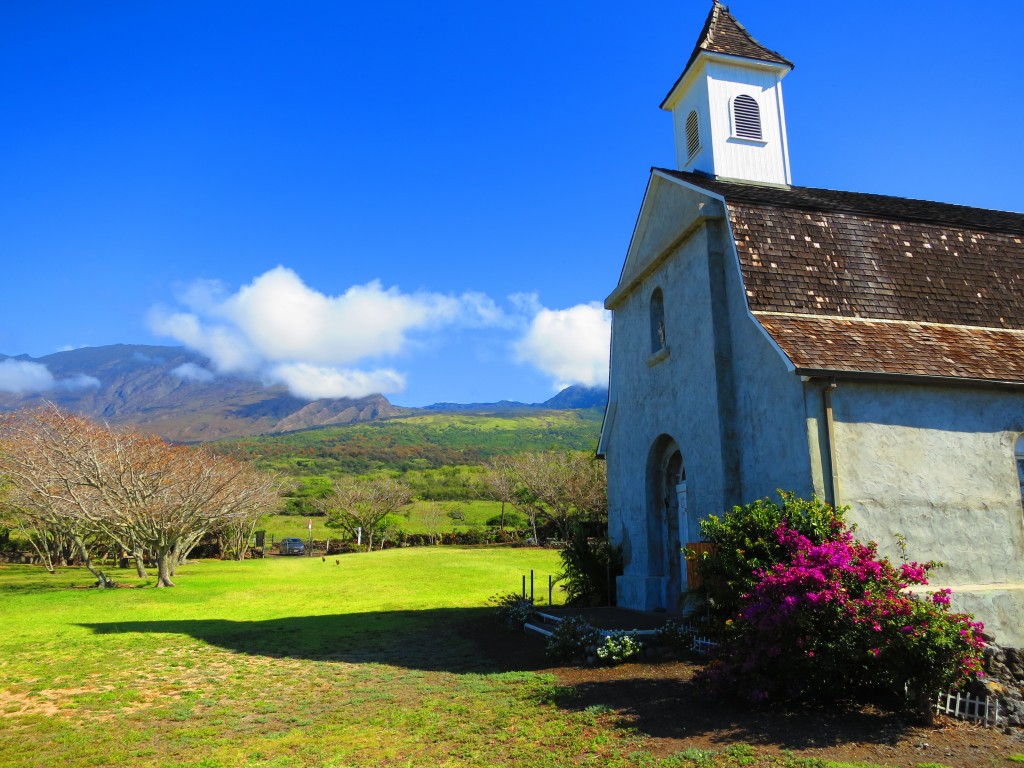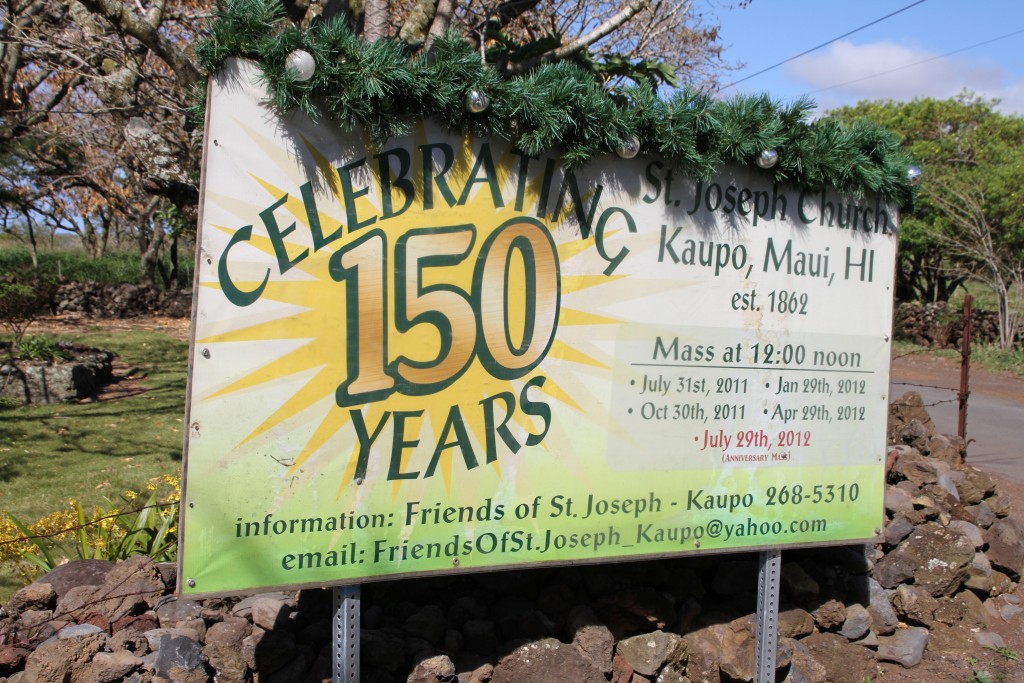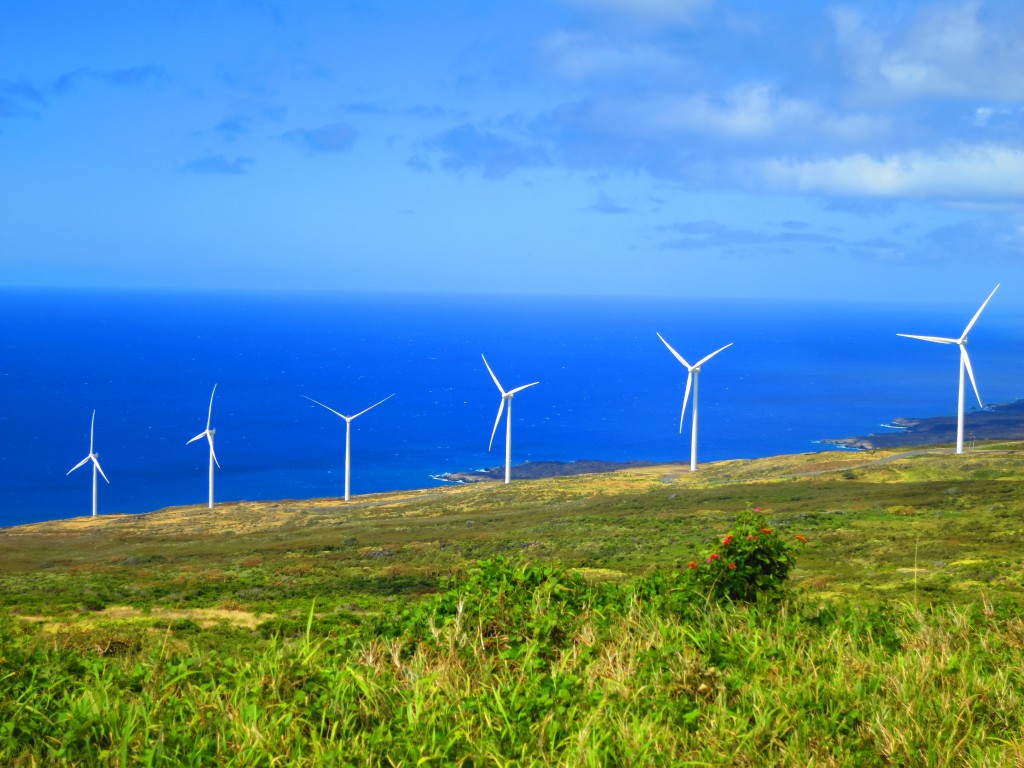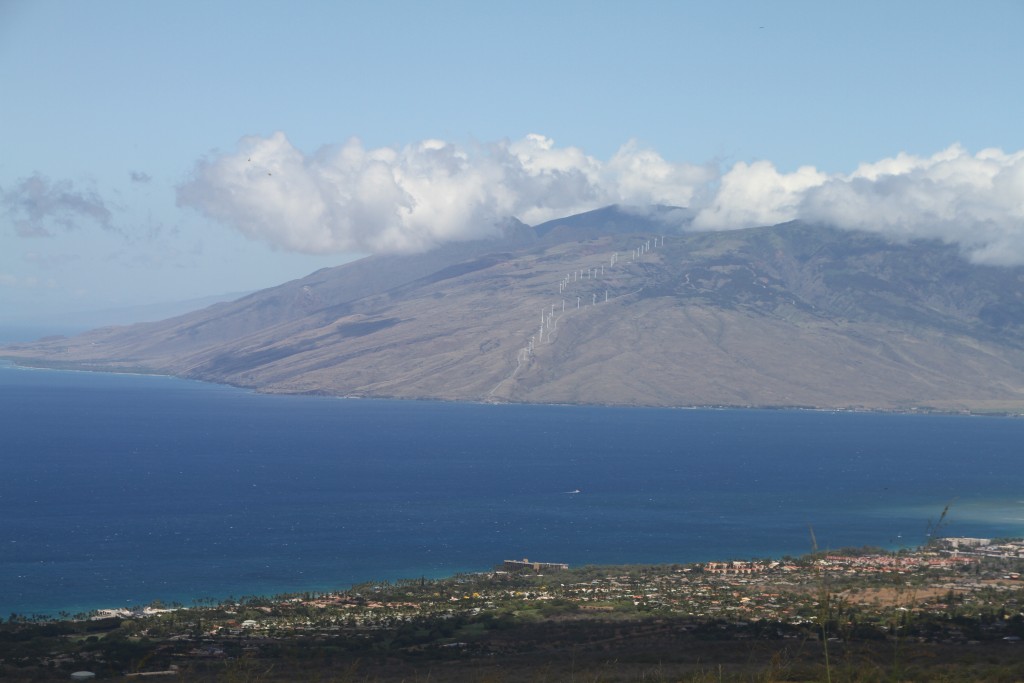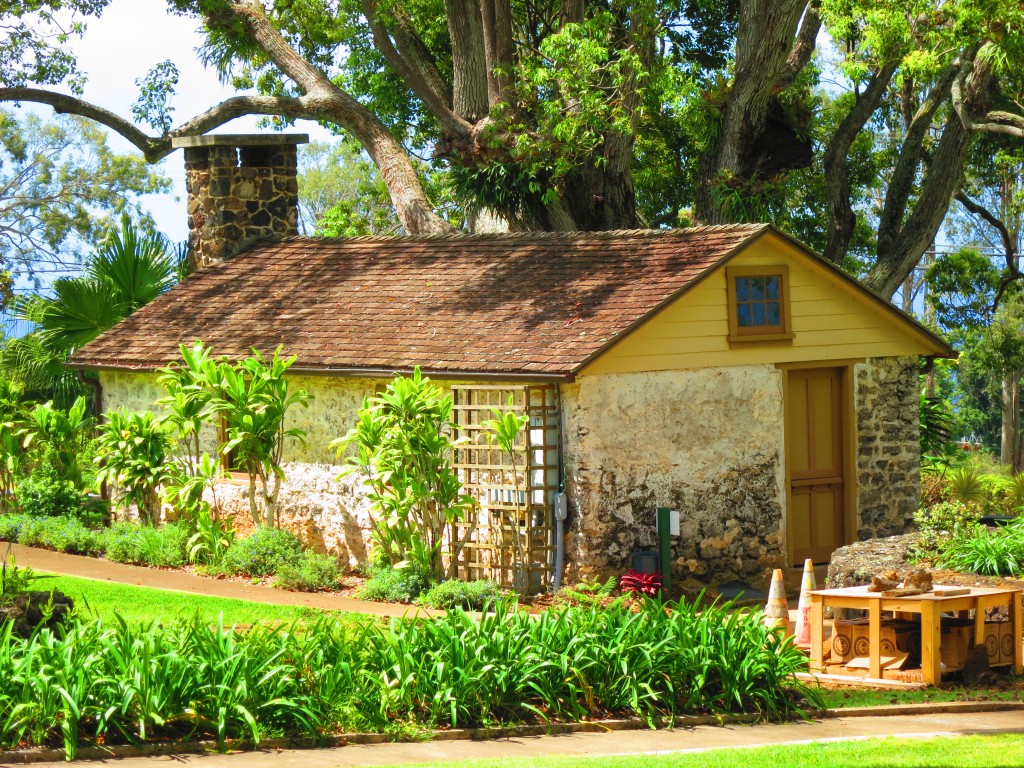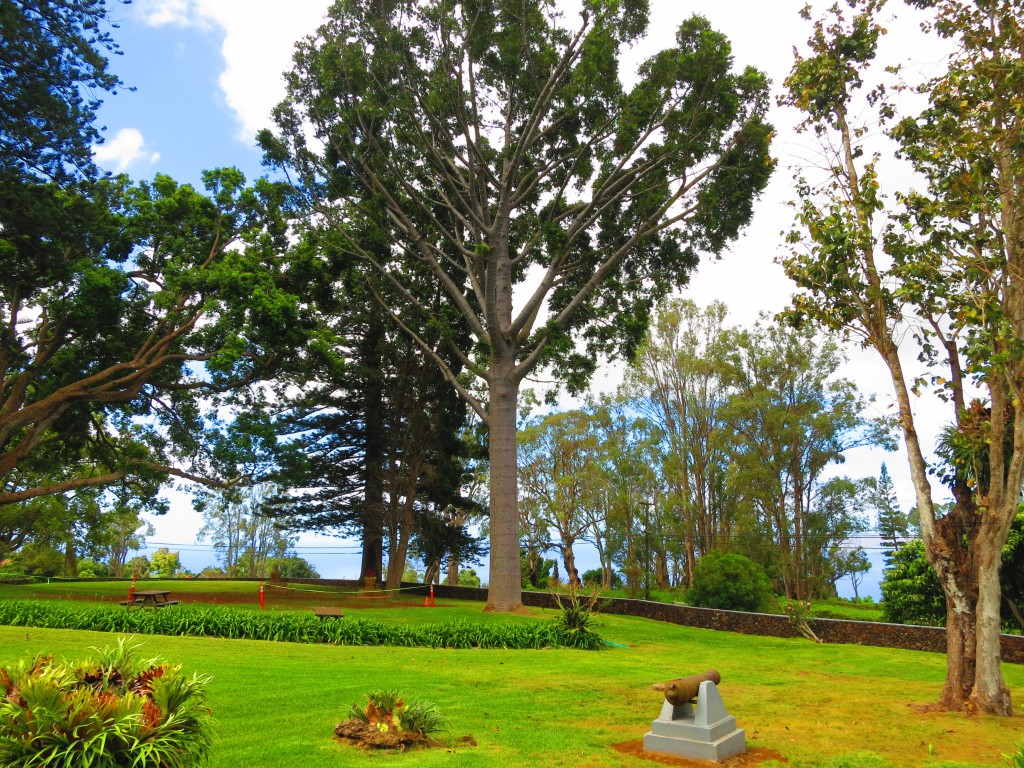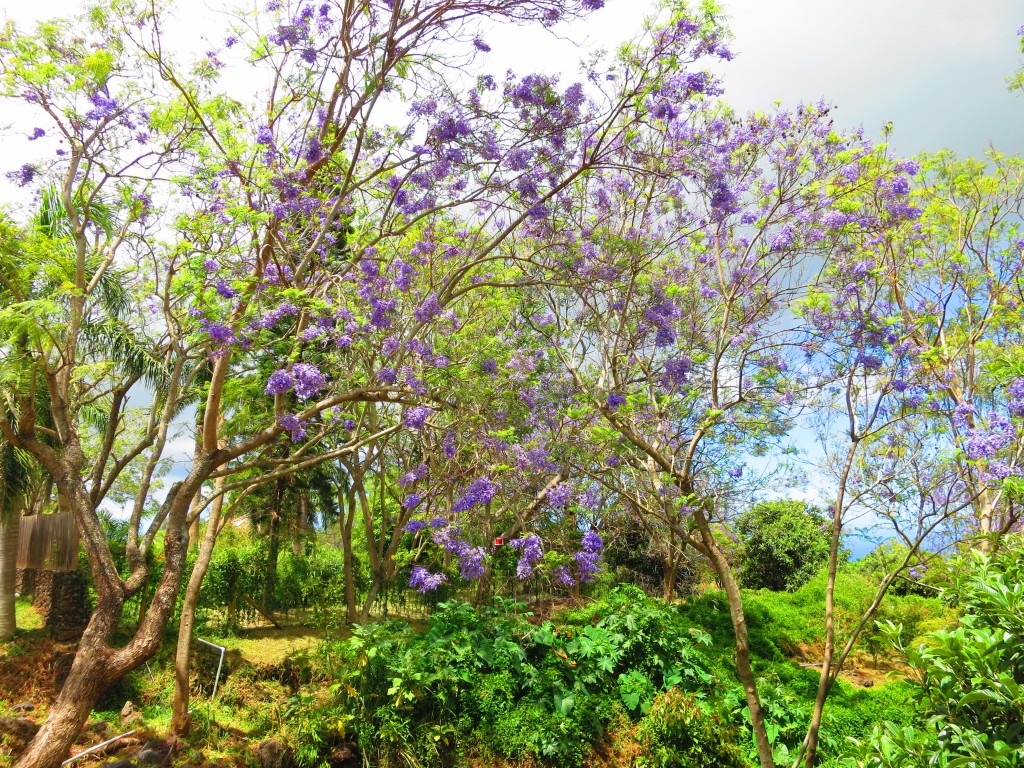From Kuhului to Hana, Maui the road is about 65 miles in distance. Normally, it would be an hour drive on most roads—not to Hana. The drive will surely take over two hours and even up to four hours depending how many stops you make.
There are 59 bridges. And, most of these bridges are one lane.
You have to be real patient when someone is on the other side waiting to cross. Also, there are 620 curves on the drive.
On the drive from Kuhului, you will pass the airport.
The town of Paia is quite interesting with cafés and shops. A few miles east is the four-star restaurant known as “Mama’s Fish House.” In 2007, we stopped to look at the menu. When we saw a $12 Onion Soup, we left, taking the menu.
Close by is Hookipa Beach Park famed for being an International wind surfing spot.
Road 36 eventually turns to route 360—Hana Highway. We have been to Hana three times. Each time was a different experience.
Our first journey in 1998 tested our relationship and patience. Even the waiter at the original Outback in West Maui thought we had just come back from Hana by looking at our faces.
Some people hire tours to make this trip.
We learned that staying in Hana one or two days is the best. In 2012, we rented a cottage for one night. It was about ten miles outside of Hana making it at least 20 minutes to get to Hana.
The 2nd story apartment was comfortable. The rains did knock out the TV dish reception leaving us to our computer.
I caught Kathie petting a Cat, which she rarely ever does.
After a hard rain, there was a beautiful sunset.
Our stay in 2015 was a downstairs apartment, close to Hana, known as Heavenly Hana Paradise. We noticed the place is still opened as of 2020.
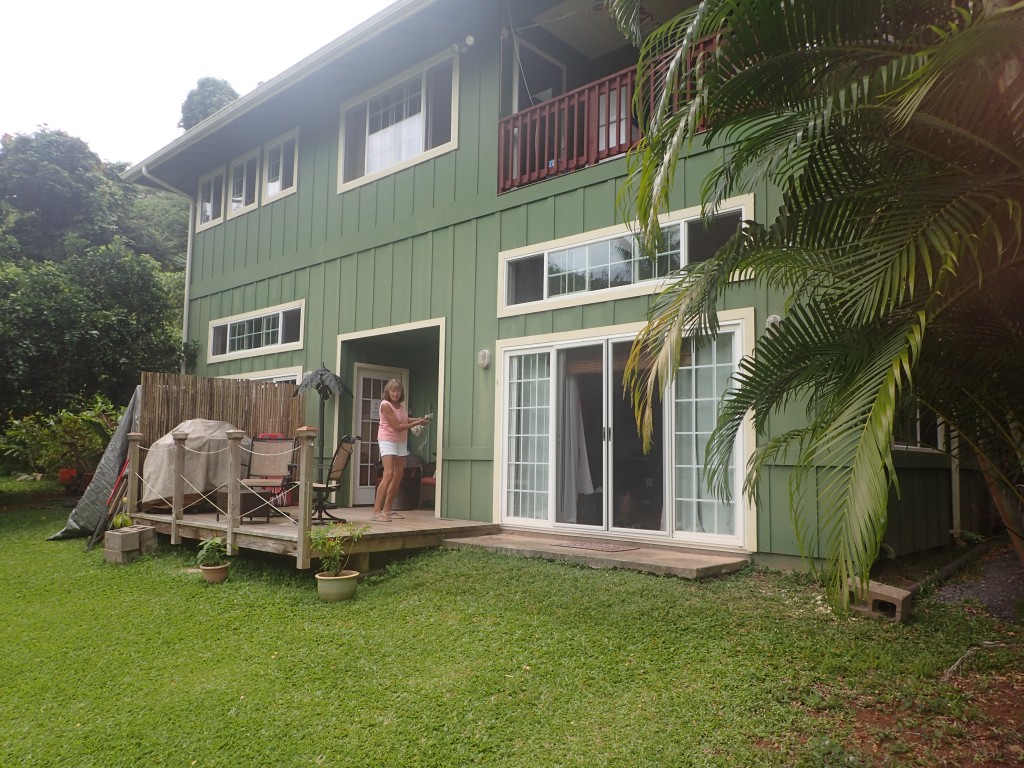
The owner was extremely accommodating and friendly.
We did have a visitor or two on our two-night stay.
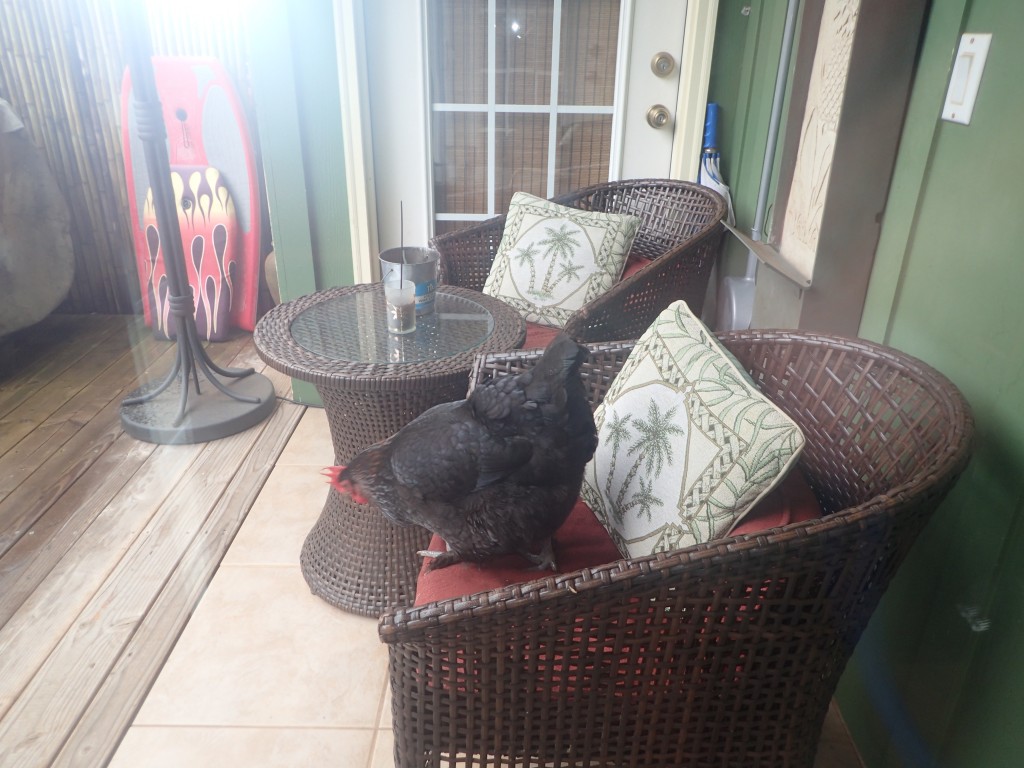
The owner had a book listing restaurants and activities. I noticed this “song” that was in the notebook:
With Google Maps you can find where the various waterfalls and trails are located. Except for a few dedicated trails, you will need to have a map out. Obviously, when you see a lot of cars parked on the side of the road, you know something is there.
We have enjoyed Waikamoi Nature trail. The trees are extremely large.
On another trail, we came across an old machine.
We did come across a forest of “Rainbow Eucalyptus.” These trees were imported from Southeast Asia and do quite well in Hawaii. There is also a grove at the Dole Plantation on the island of Oahu.
There are a number of side diversions. But, be careful about going to close to the edge. In 2015, a young boy took one false step from the road and perished down the cliff. Urinating men have been known to take their last leak.
There is a beautiful “Black Beach” at Waianapanapa State Park.
You can also walk along the coastal trail at the State Park.
Hana is extremely small. One of the major focal points is Hana Maui Resort. In 2015, it was known as “Travaasa Hotel Hana.” Rooms in 2020 go for $700 a night.
We did have a small meal outside of Travaasa’s patio area in 2015. I had a rather pricy sandwich.
Kathie had Edamames. She found one with one seed, two seeds, three and even a four seeded Edamame.
Looking up at the tree, we spotted these Hawaiian birds.
Across from the resort, is Fagan’s Cross. It can easily be missed as the cross sits on top of a 545-foot hill.
Going up Fagan’s Cross does make a good family hike. You can get superb views.
The cross was named for Paul Fagen who brought cattle ranching to the area. The cross was erected in 1960.
Eating establishments are limited in Hana. There is one pricy general store name “Hasegawa.”
A popular hangout is the Braddah Hutts BBQ grill truck. You can get a decent BBQ meal for about $10 or so dollars in 2015.
We found a pizza place at Hana Farms Restaurant. Many of the ingredients were organic in nature.
The pizza box was made from banana leaves.
Continuing on the Hana Highway you will come across a large waterfall. Stop here and take a picture.
The road does get narrow, but don’t let that stop you. Eventually, you will come to the Kapahulu Visitors Center. Your Haleakala receipt or National Park Pass will cover the entrance fee.
This area is known for the Seven Sacred Pools of Oheo. Many people come here to swim in the pools. They have had some deaths with these falls. People swim anyway. We have never swam here.
We have taken the Pipiwai Trail to the falls several times. We love going through a forest of bamboo trees.
Bamboo itself is actually a type of grass.
Eventually you will come to the 400-foot Waimoku Falls. We found water-shoes is the best item to have when trekking near the falls.
The highest Hawaiian Falls is on the Big Island. The Akaka Falls is 422 feet from top to bottom.
Just a mile down the road is where Charles Augustus Lindbergh is buried. He died of lymphatic cancer at the age of 72 on August 26th, 1974.
A few days before he was flown on a United Flight from NYC to go back and die at his favorite place, Kipahulu, Maui-Hawaii—eight miles south of Hana. He thought this was the most beautiful spot in the world. His grave meets the rising sunrise sun.
There are no direct signs to this man’s famous grave. You have to know to turn on the “makai side” of the road—seaward—at the Palapala Congressional Church sign. The narrow road will have pot-holes and looks like the last place to ever host the grave of one of America’s famous hero’s.
Built in 1857, the church is small and non-pretentious.
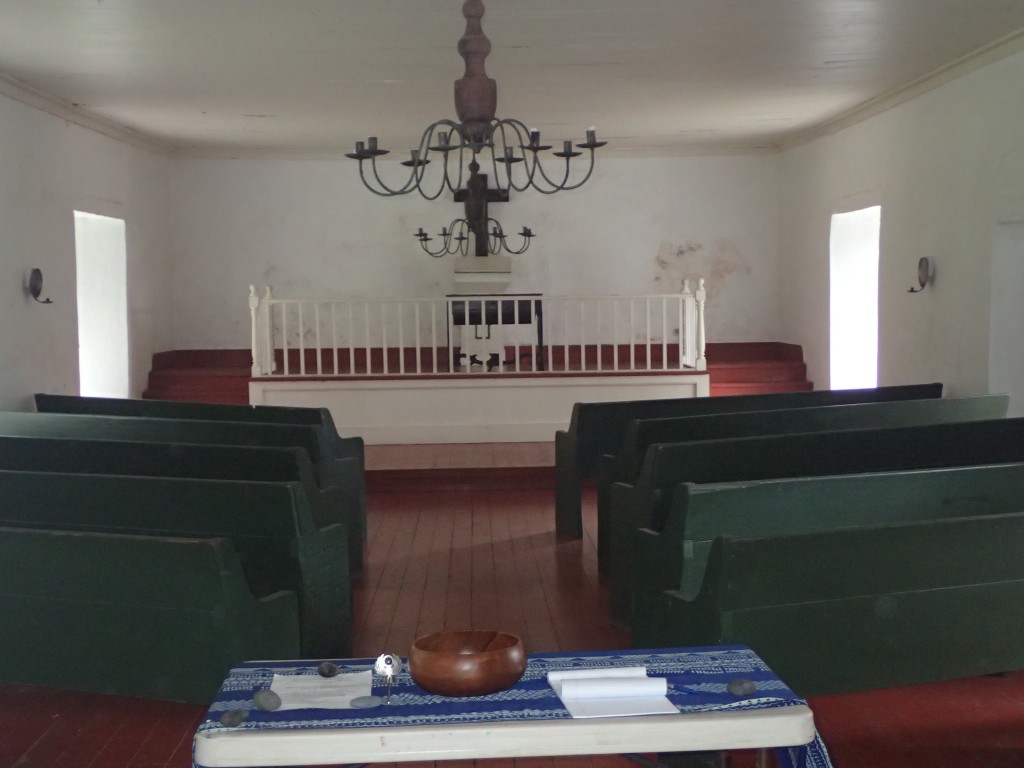
On our first visit to Lindbergh’s grave, we passed it by five miles. Through an intense conversation with my wife, she forced me to ask a person mowing his lawn. “It is just down the road,” the man said. We males have a tough time asking directions. On the way, we did spot a rather interesting sign and a broken down car.

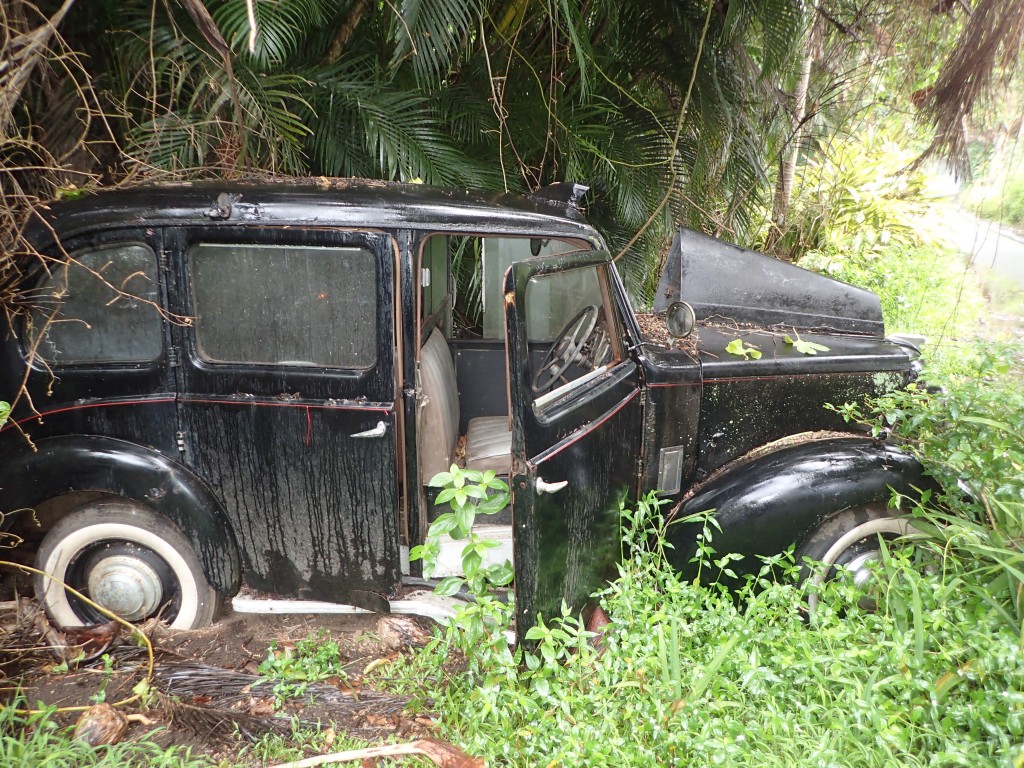
The grave is by a Java Plum tree. Charles was buried in a plan wooden coffin, barefoot and wearing his khaki work clothes.
On Lindbergh’s grave is part of Psalm 139 “…If I take the wings of the morning and dwell in the uttermost parts of the sea…”. At the bottom right-side are the initials C.A.L.
You will see there are several smaller graves close by. These are from Sam Pryor—a close friend to Lindbergh—of six beloved gibbon monkeys.
My favorite grave in the area is from Robert Scott G. Deming who was only 41 when he died. His marker reads, “Success is in the Journey, Not in the Destination.”
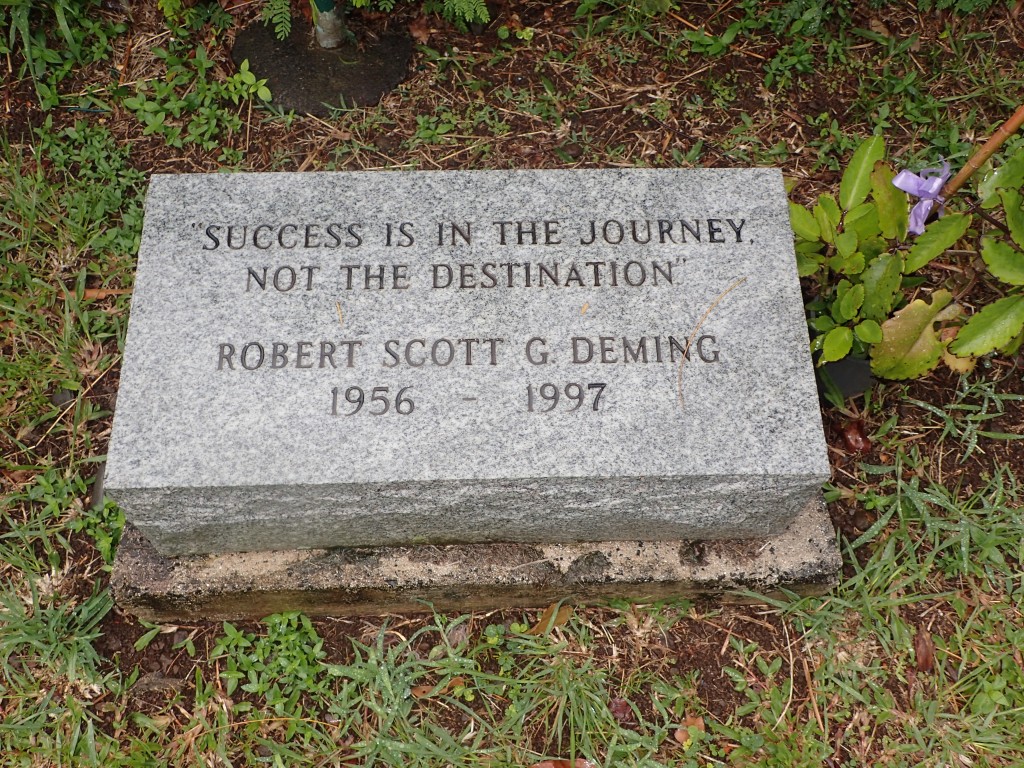
As a history teacher, the life of Lindberg has fascinated me. Seeing his plane, “Spirt of St. Louis,” at the Smithsonian was a real treat.
As many of you know, Charles was the first one to fly solo from the USA to Paris in May 20th, 1927. The recognition would change his life. Charles would be known by several nicknames: “Lone Eagle, Lucky Lindy and Slim.”
He later got married to a very intelligent writer and poet, Anne Spenser Morrow.

